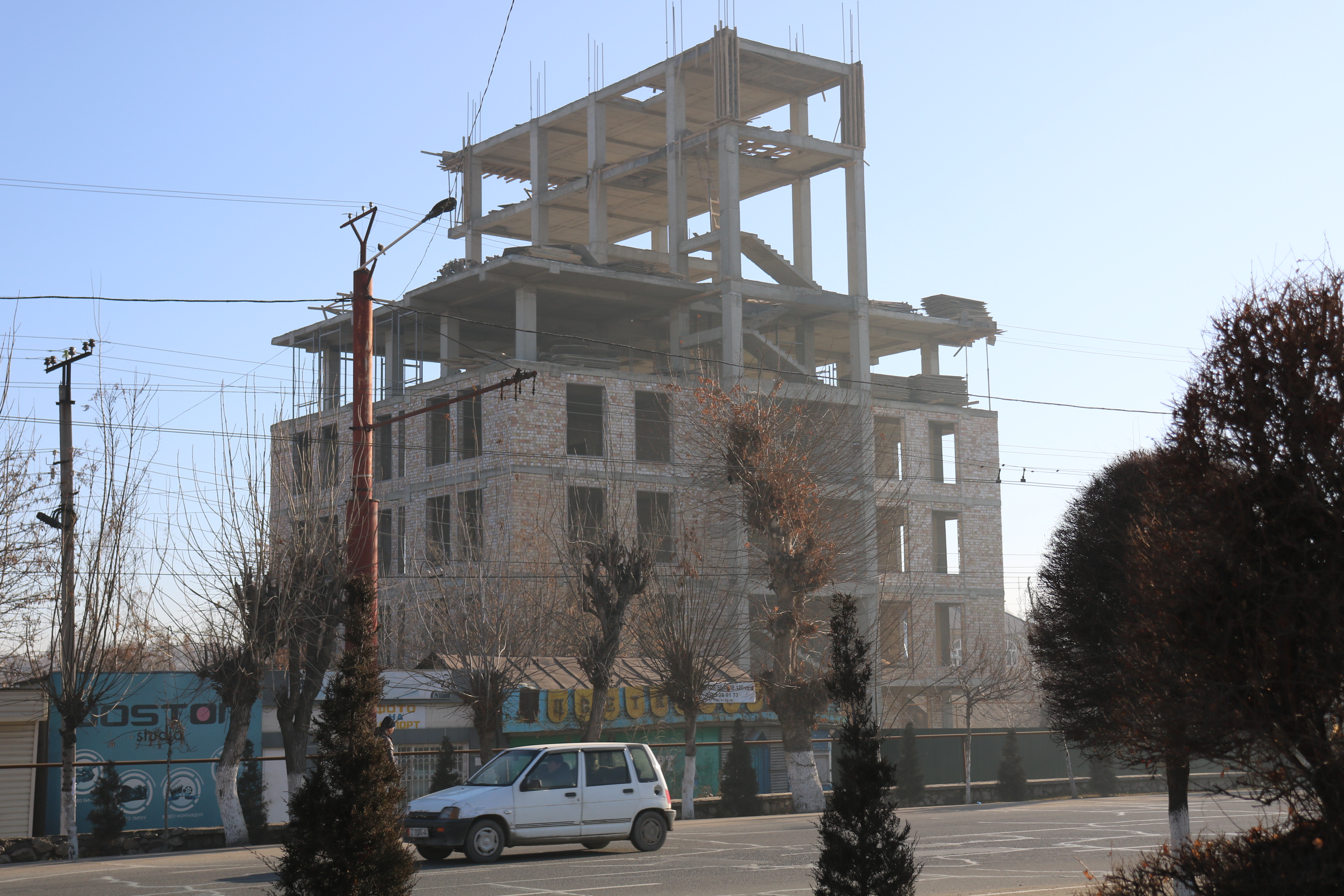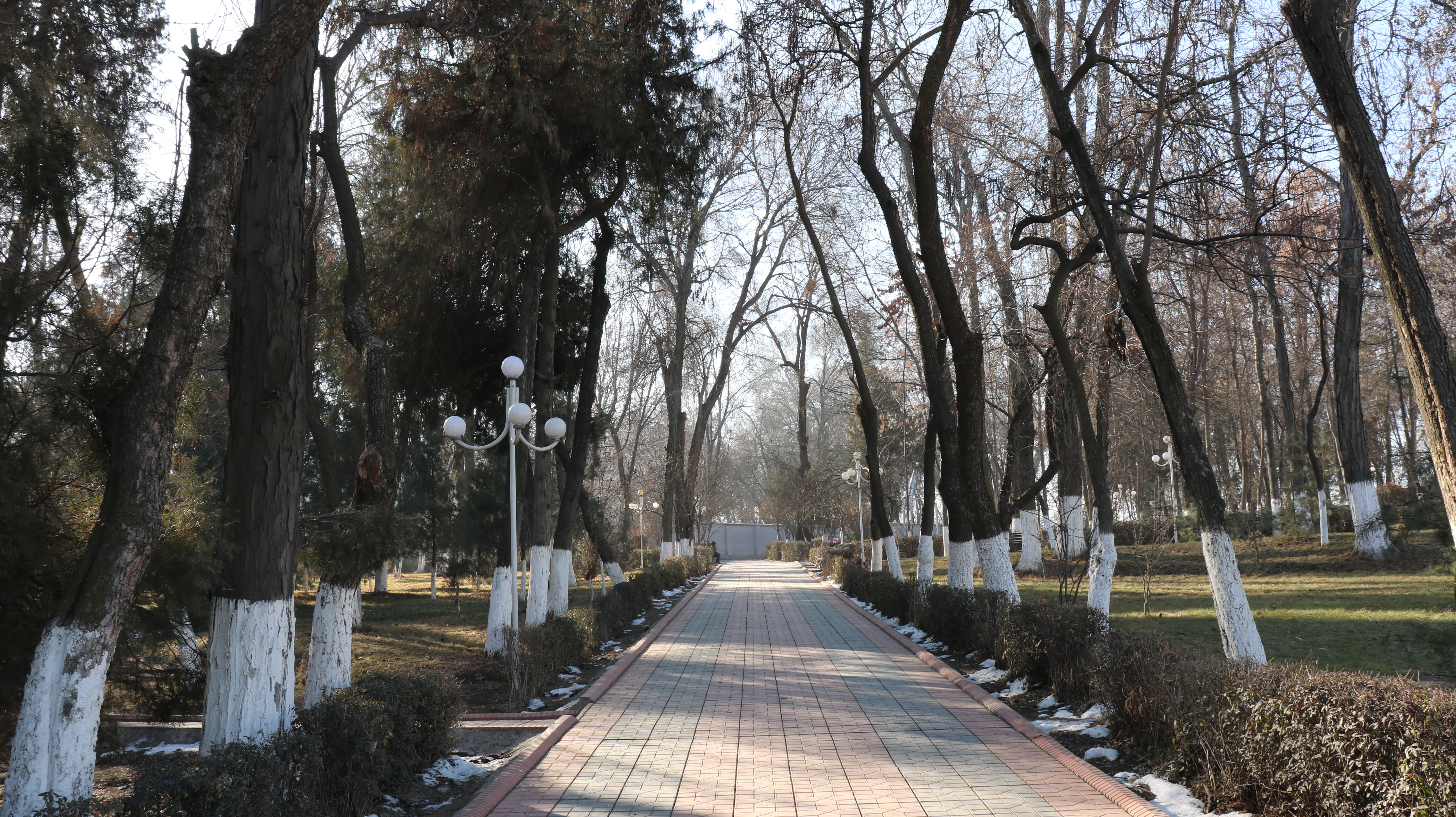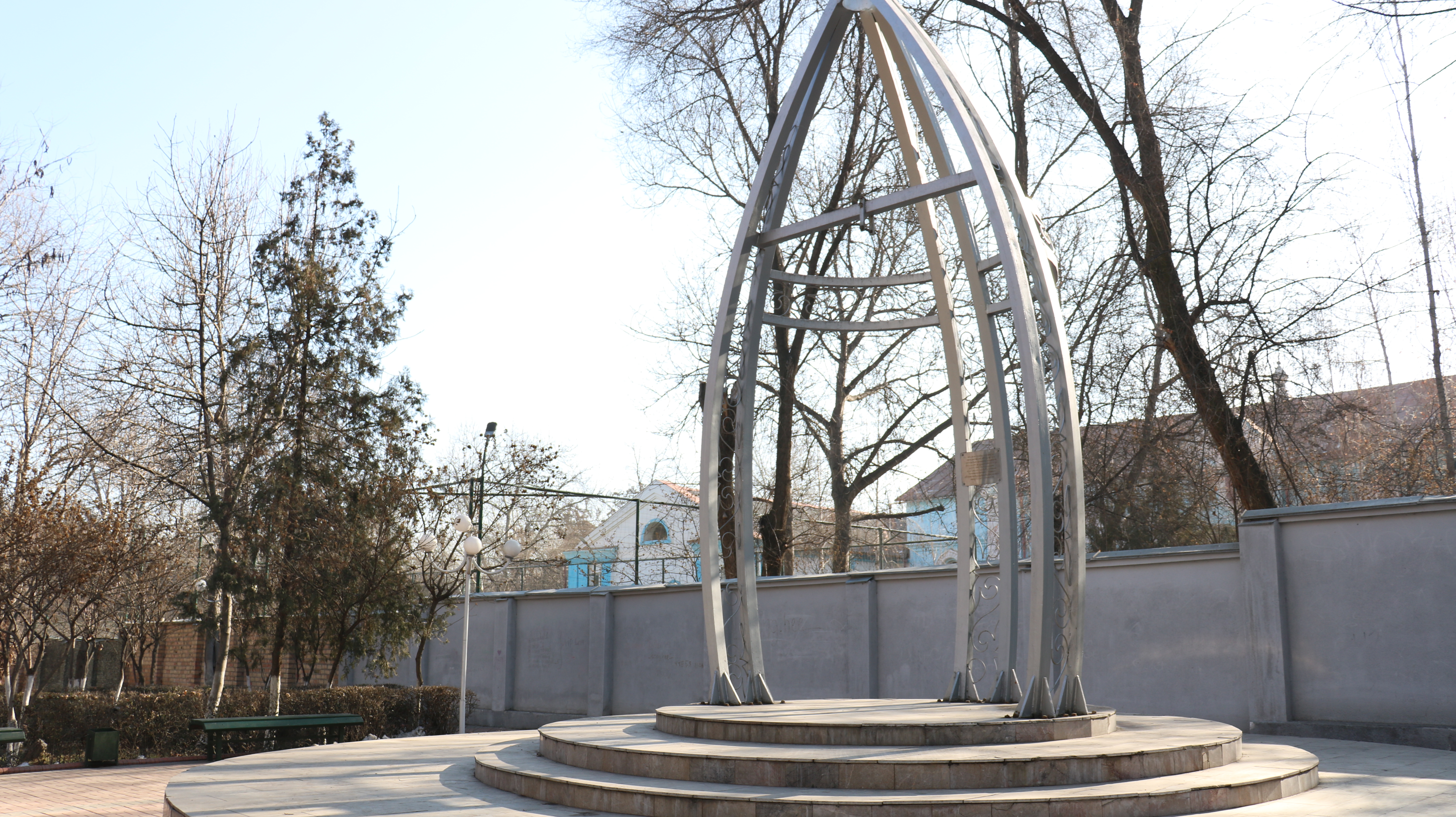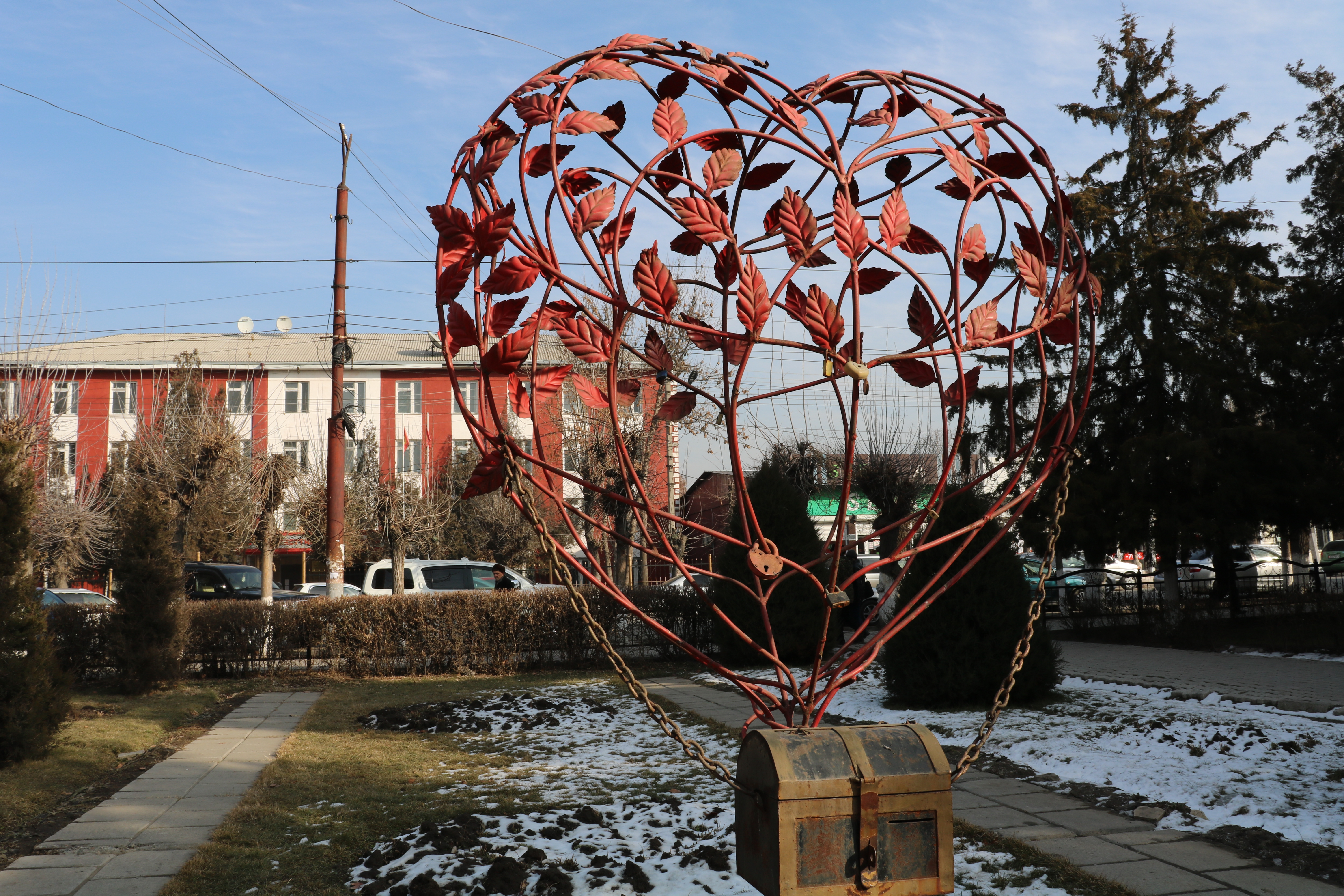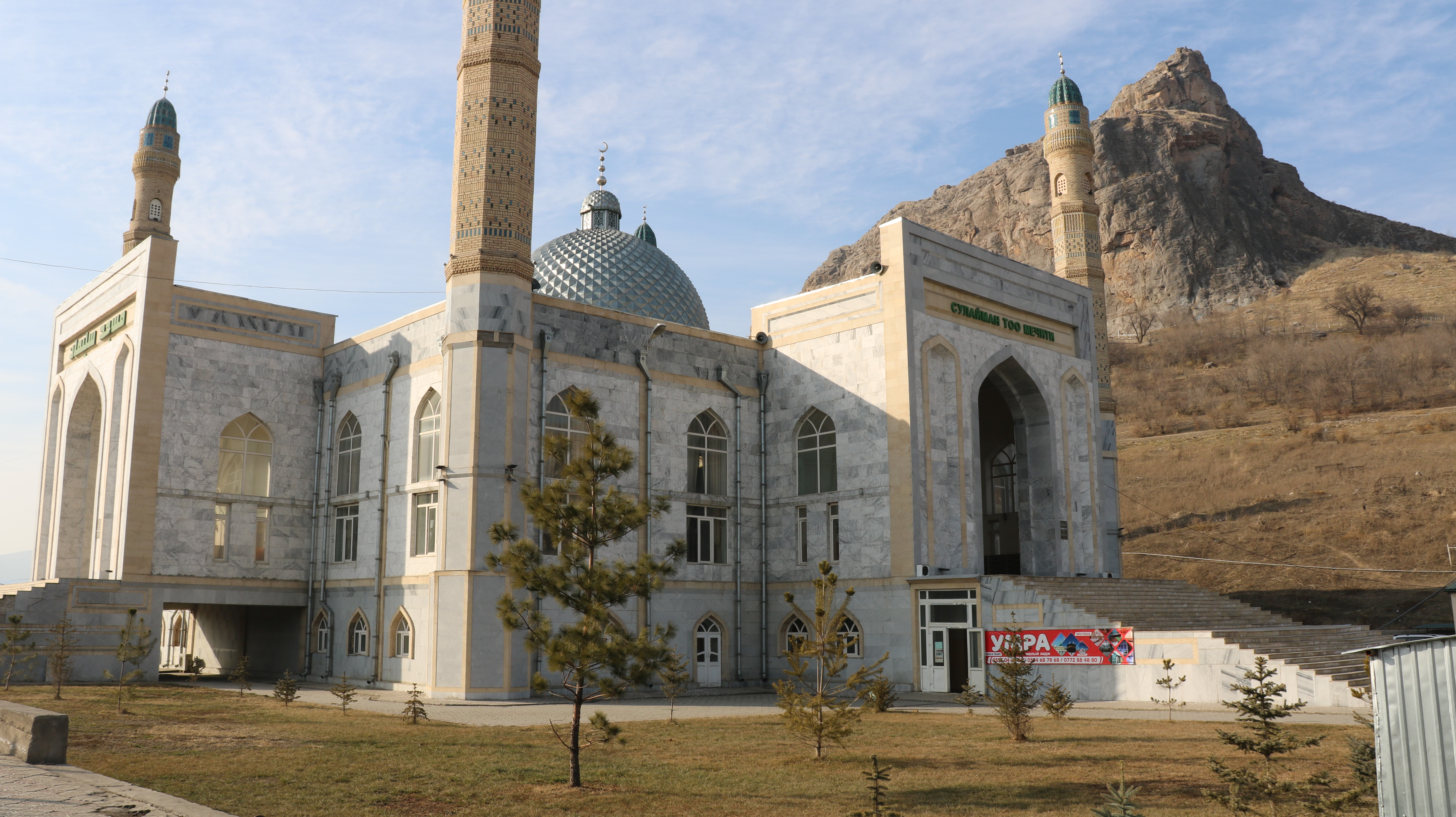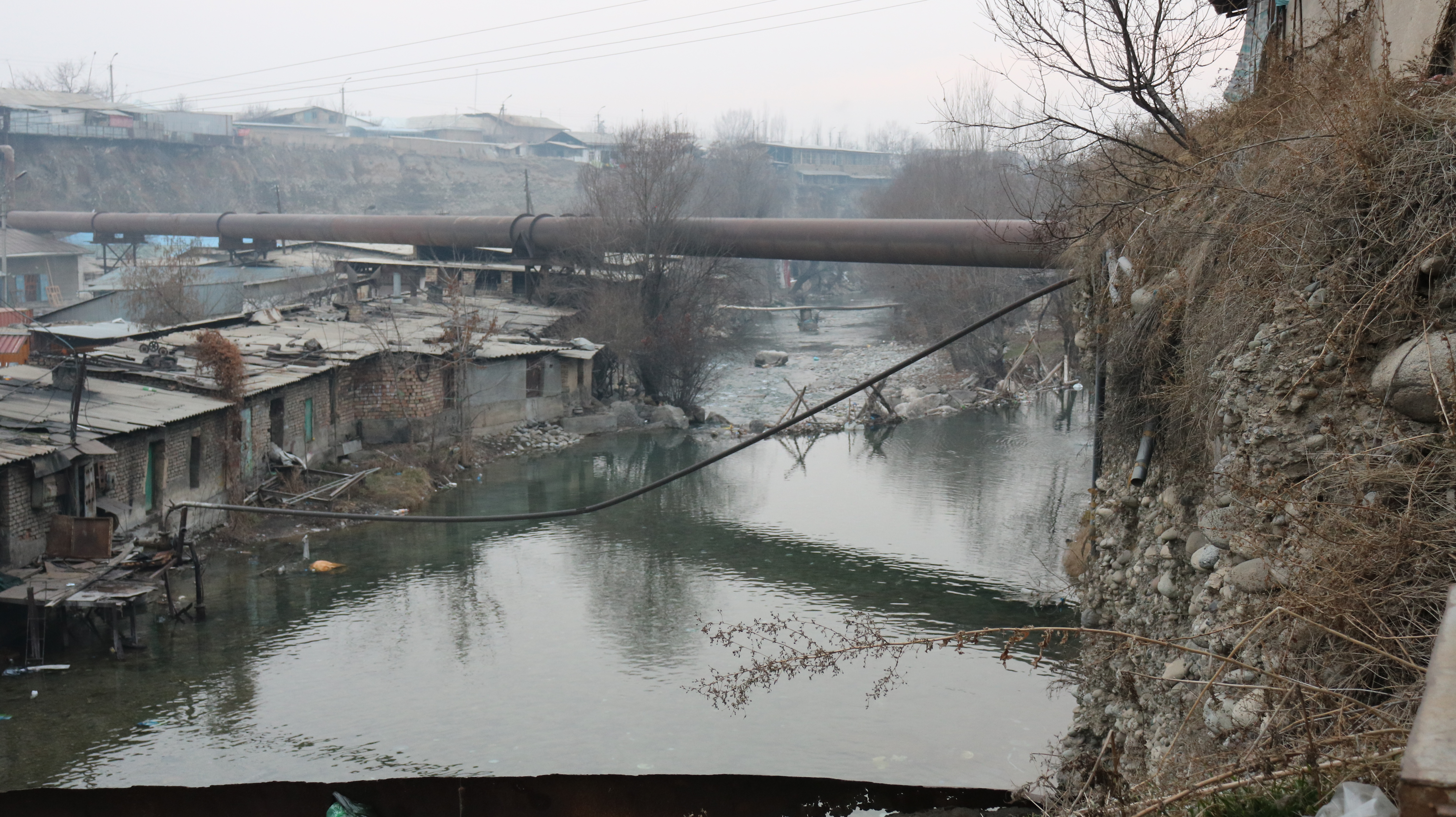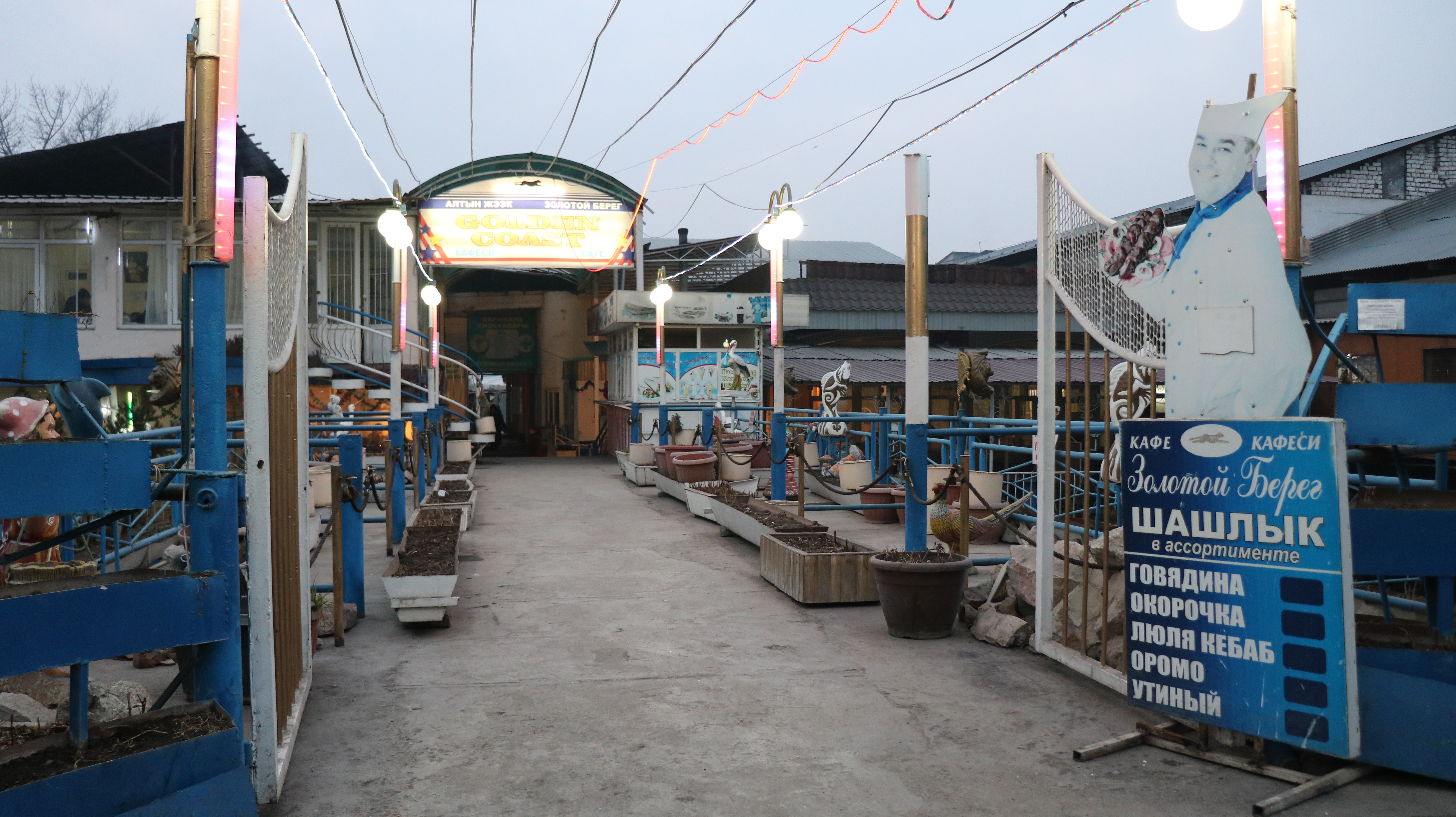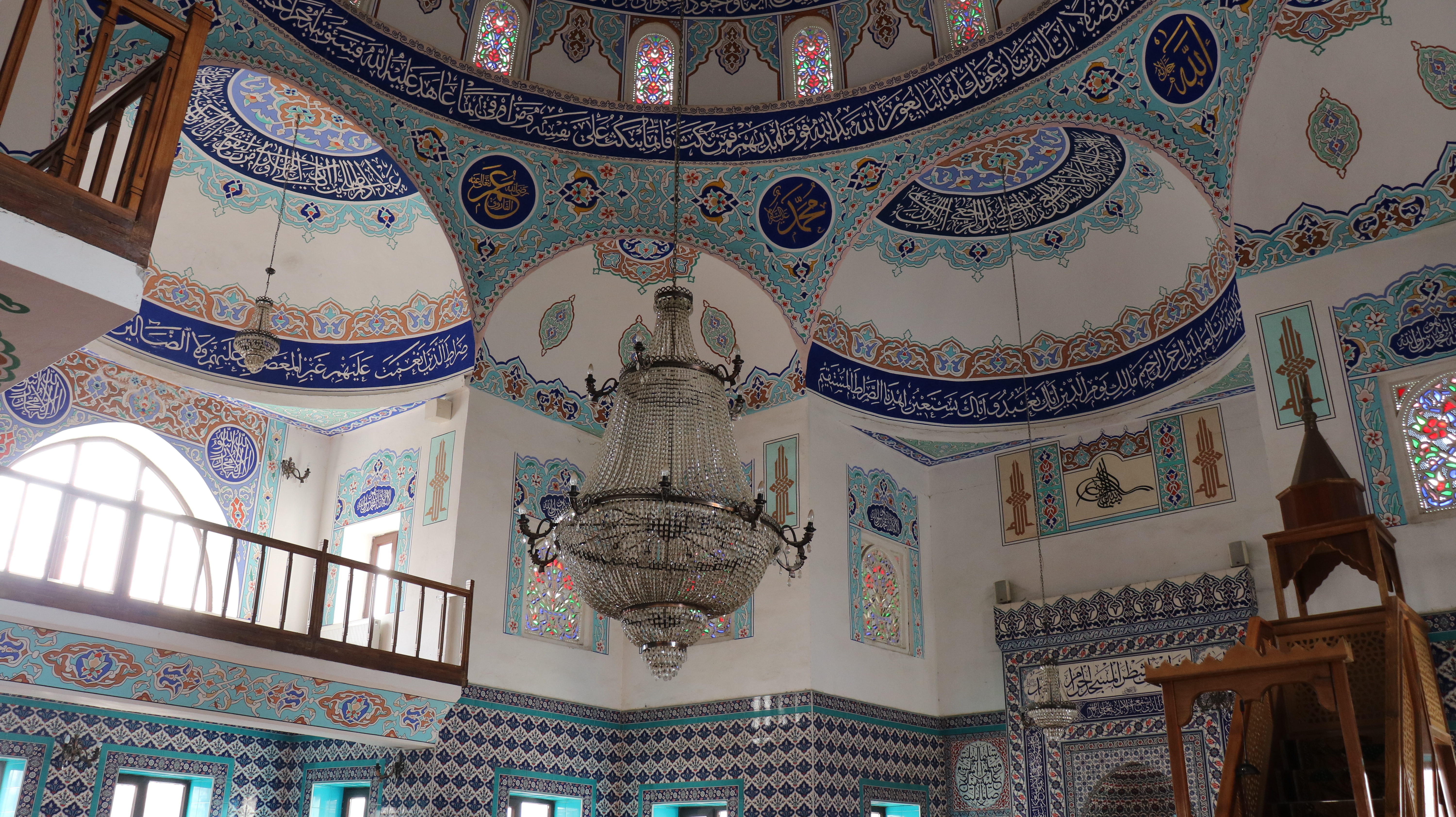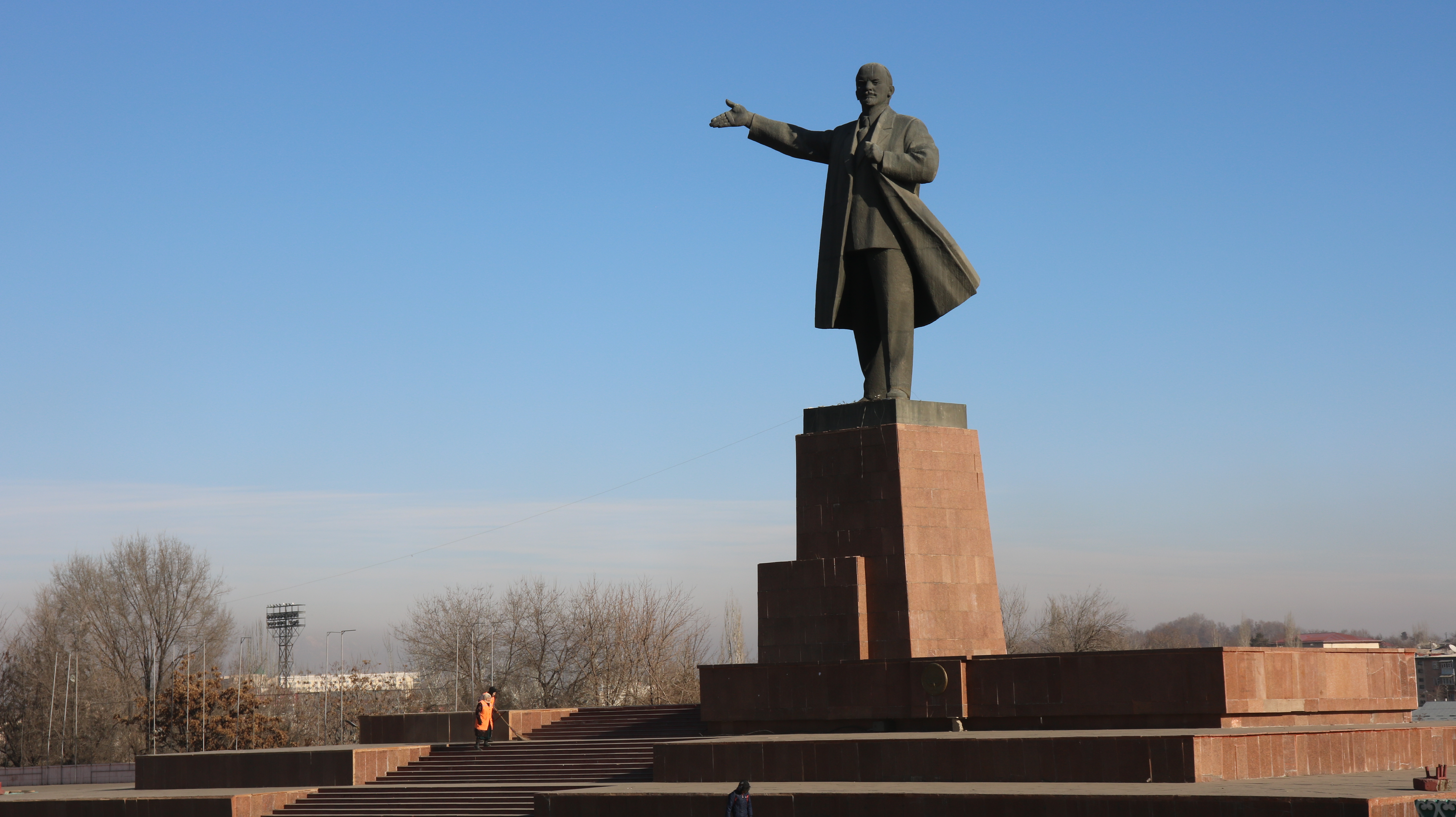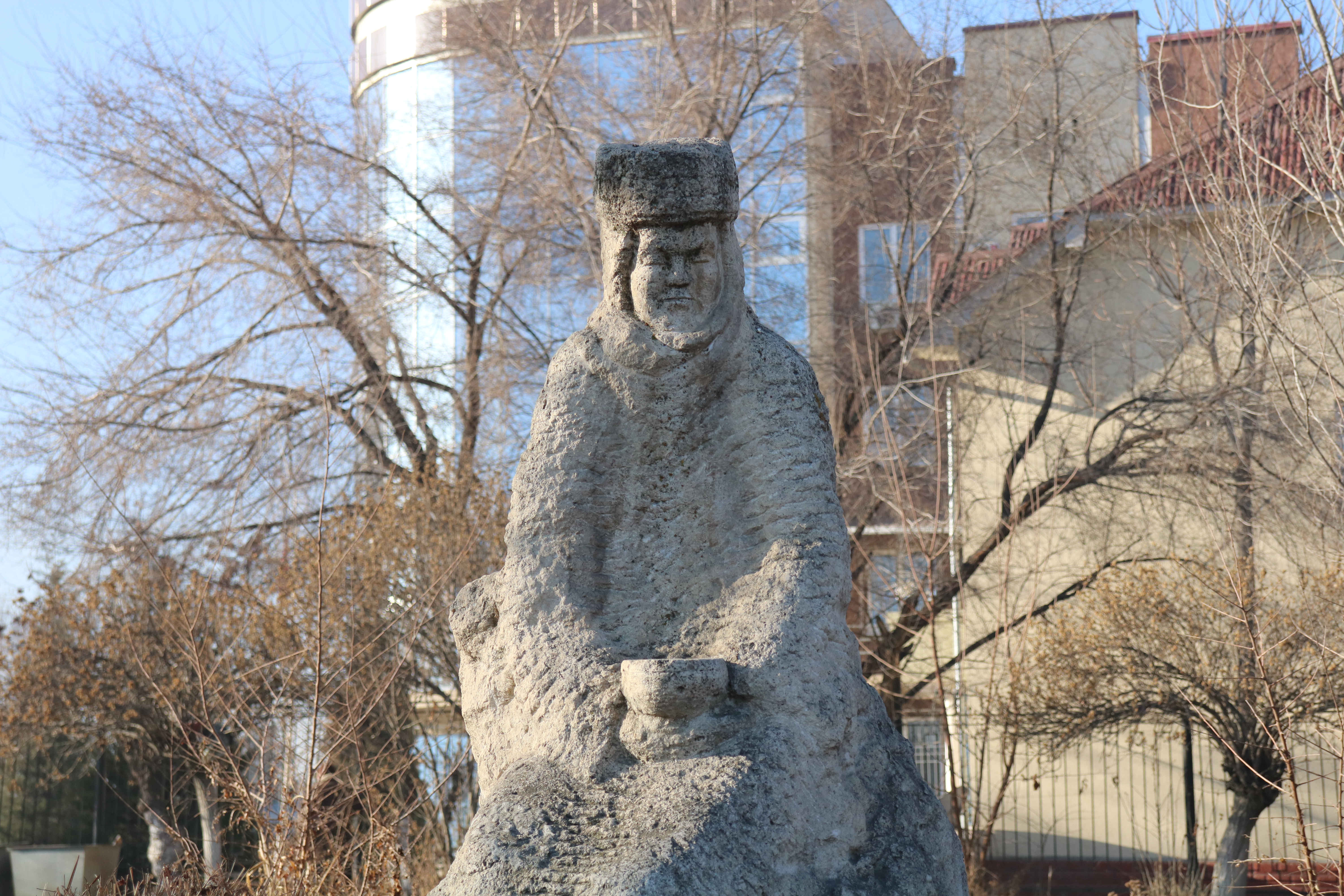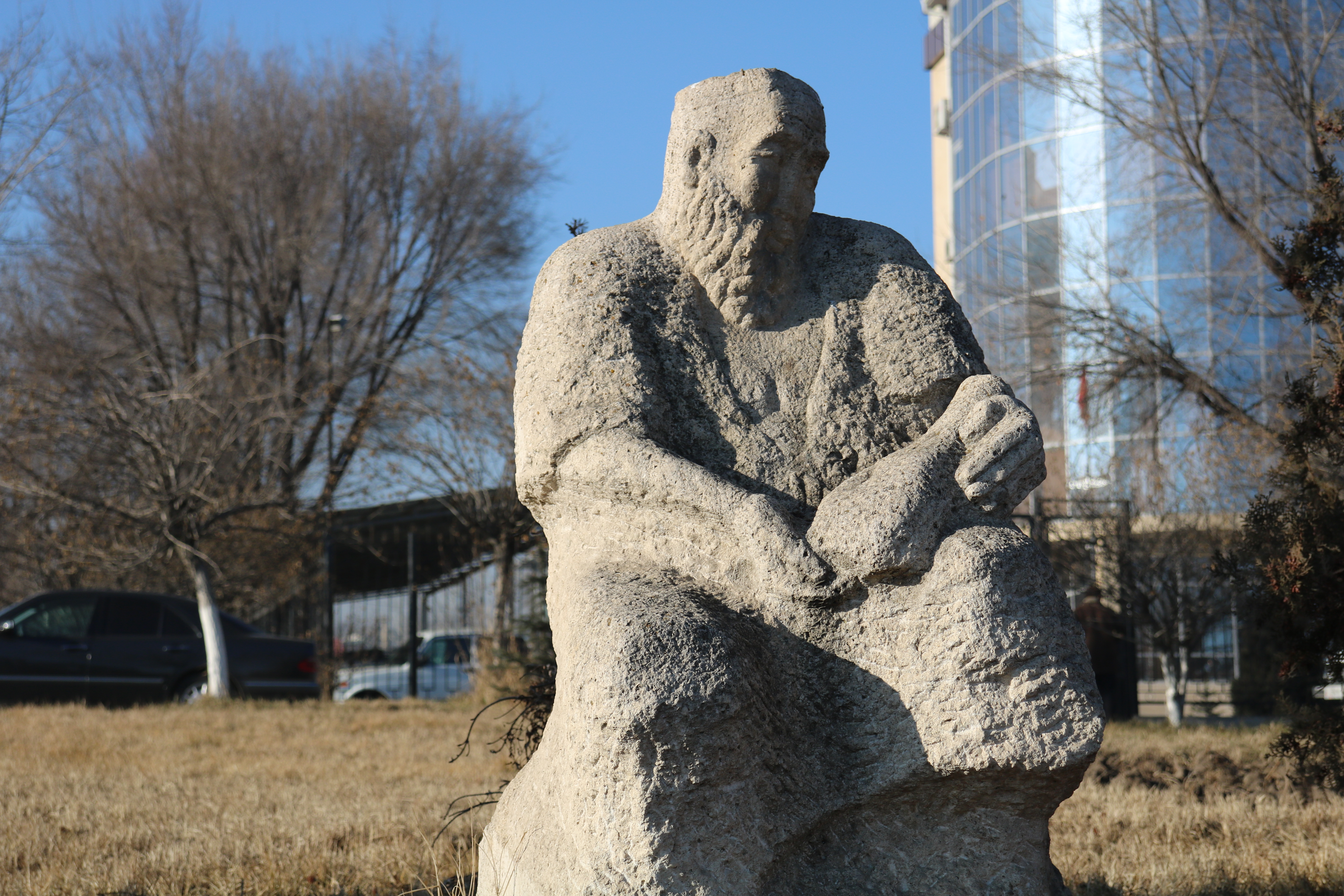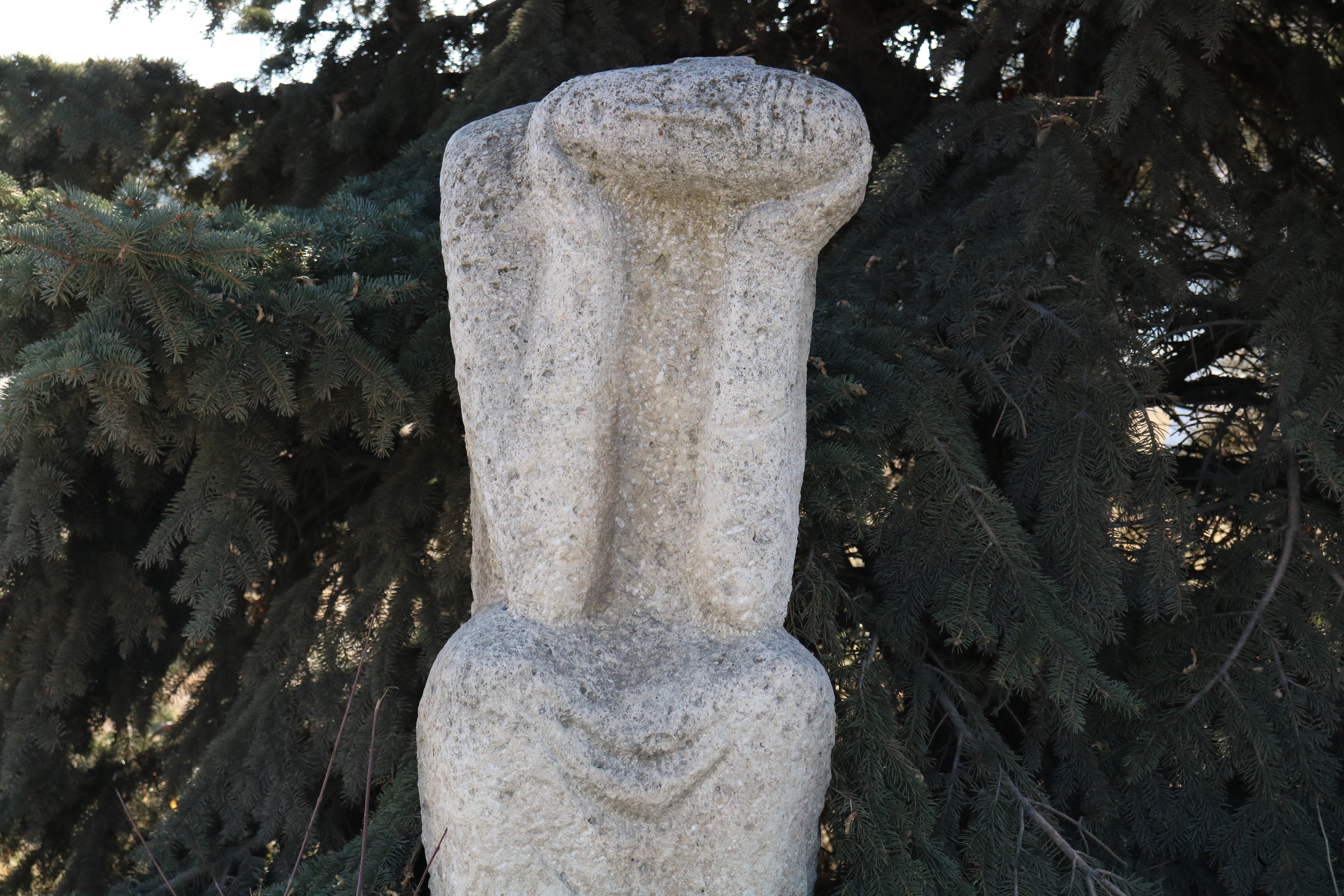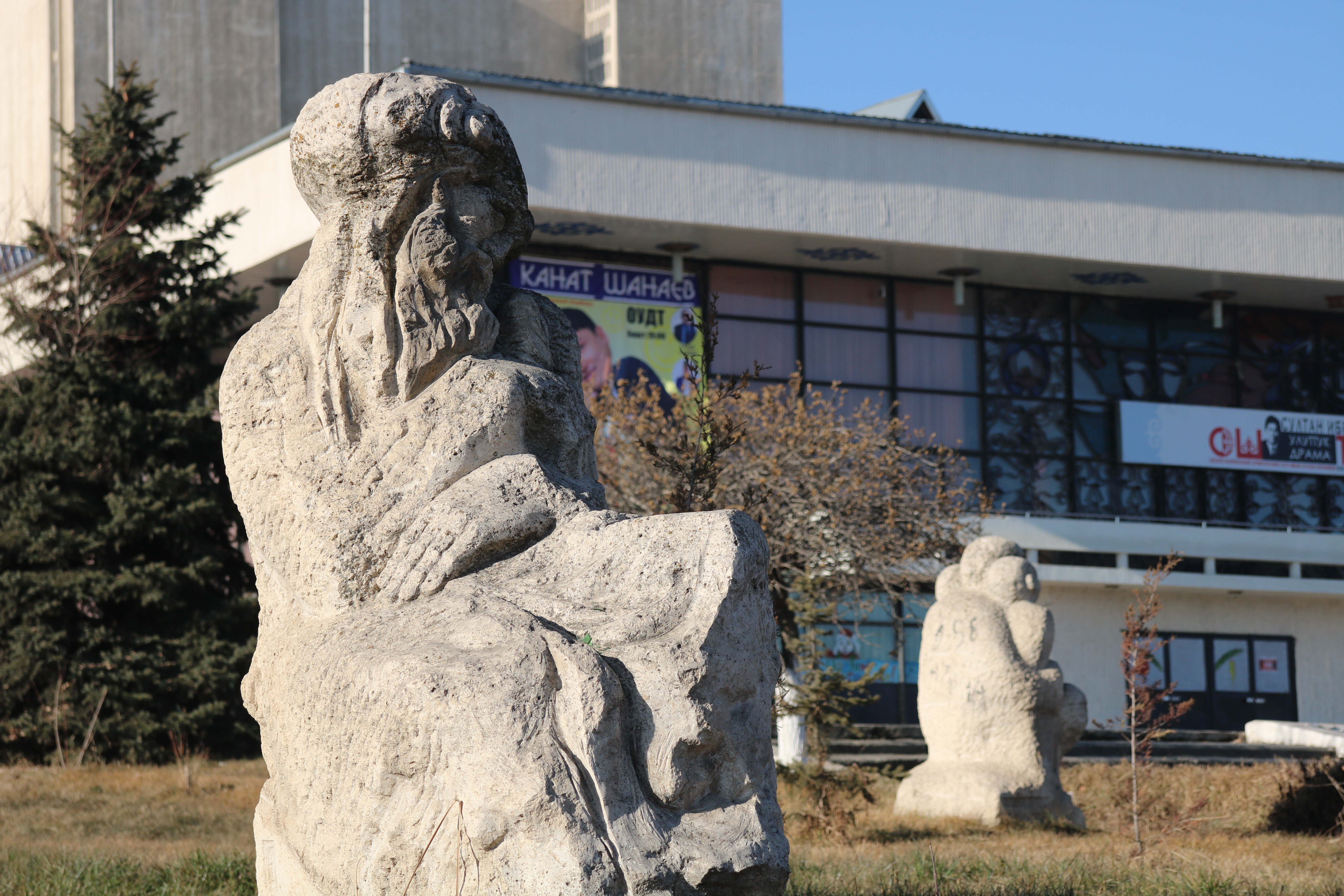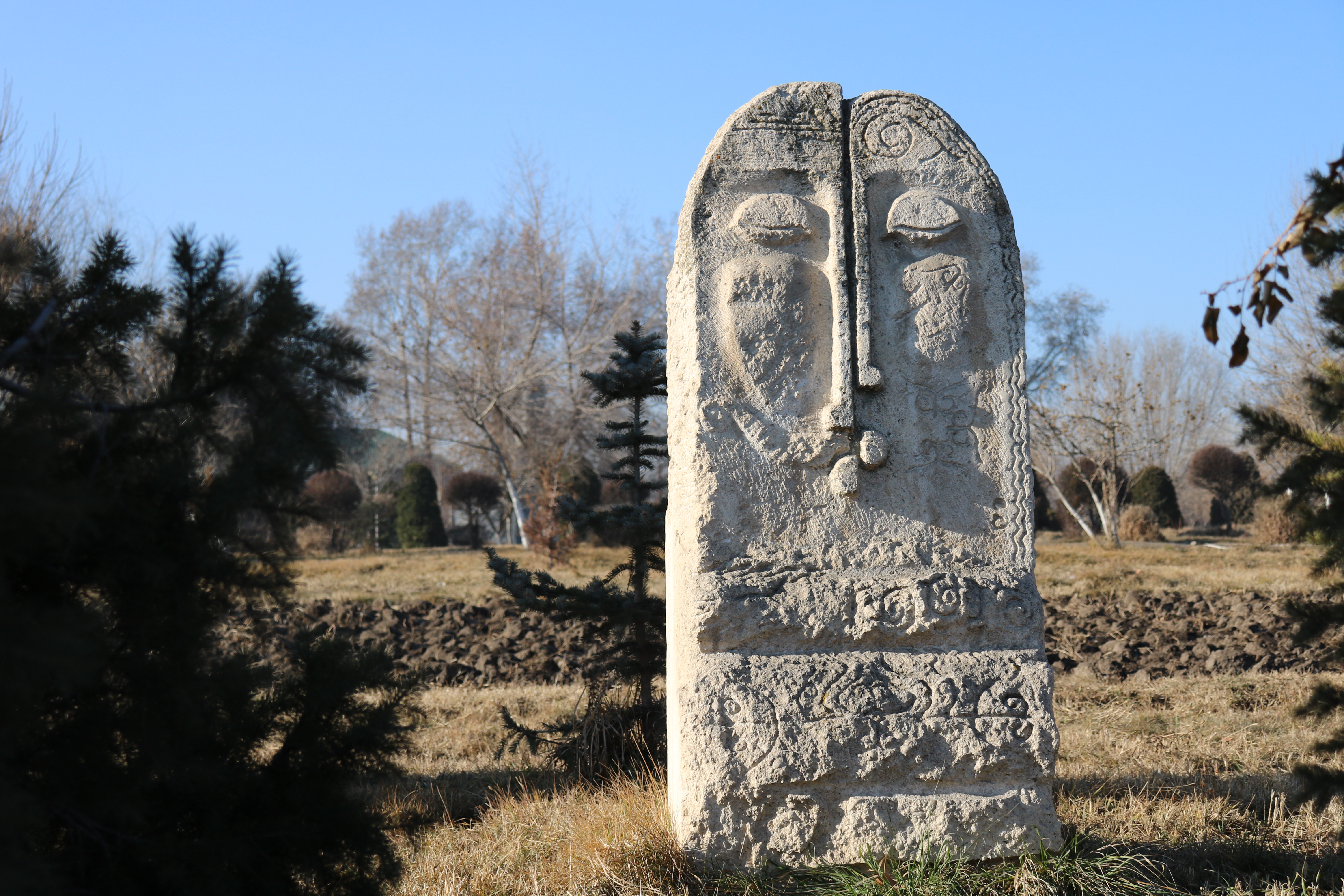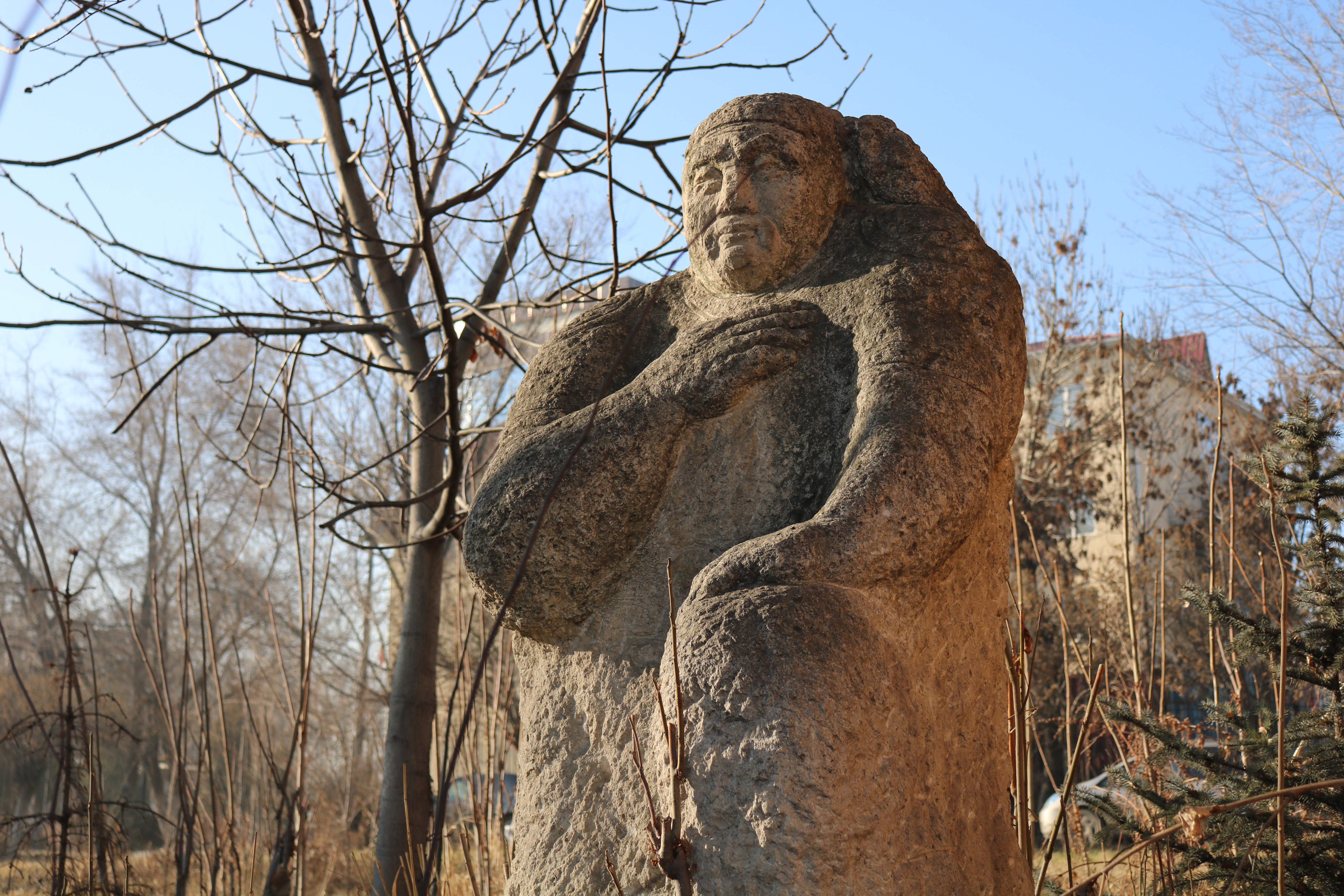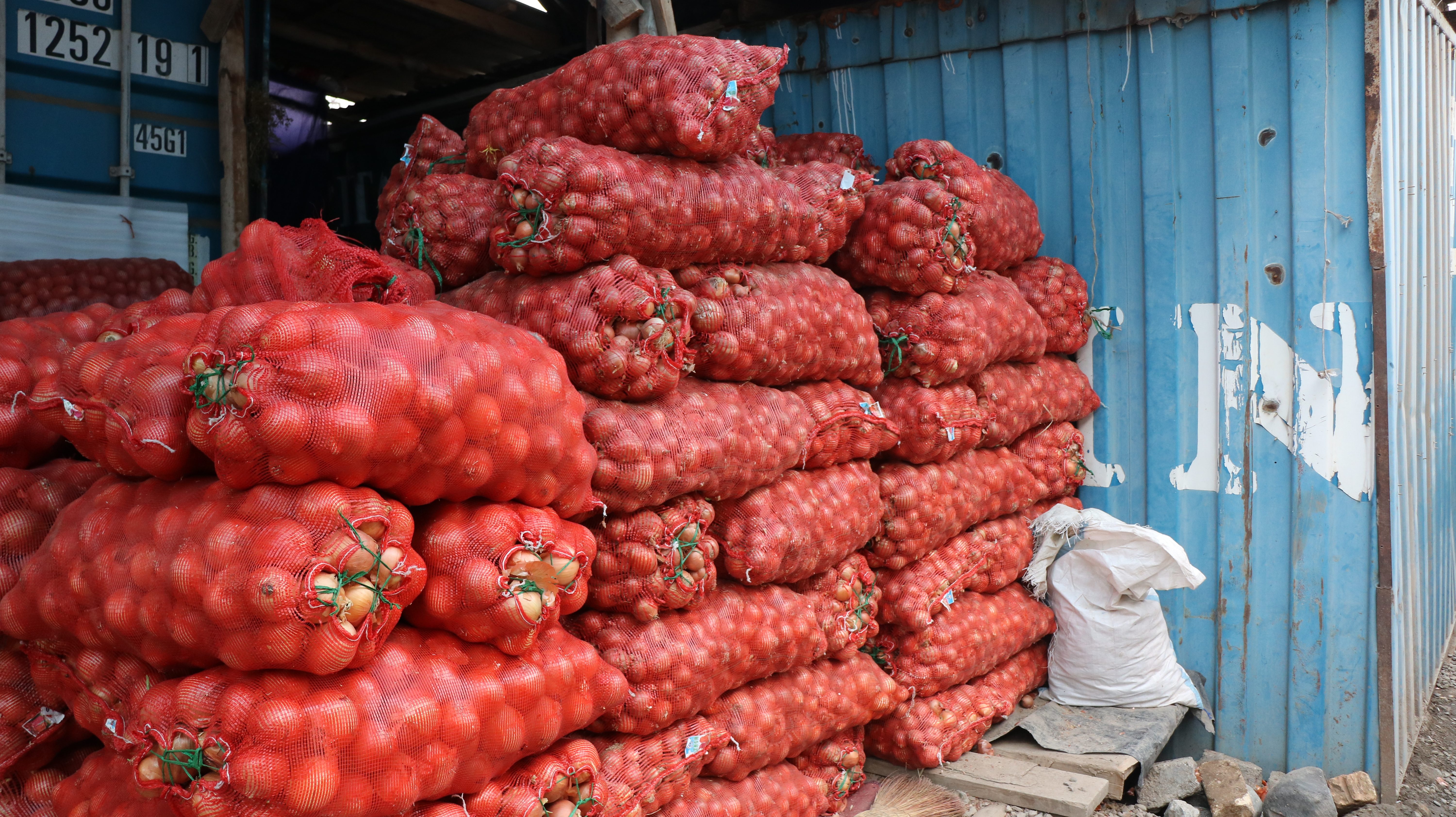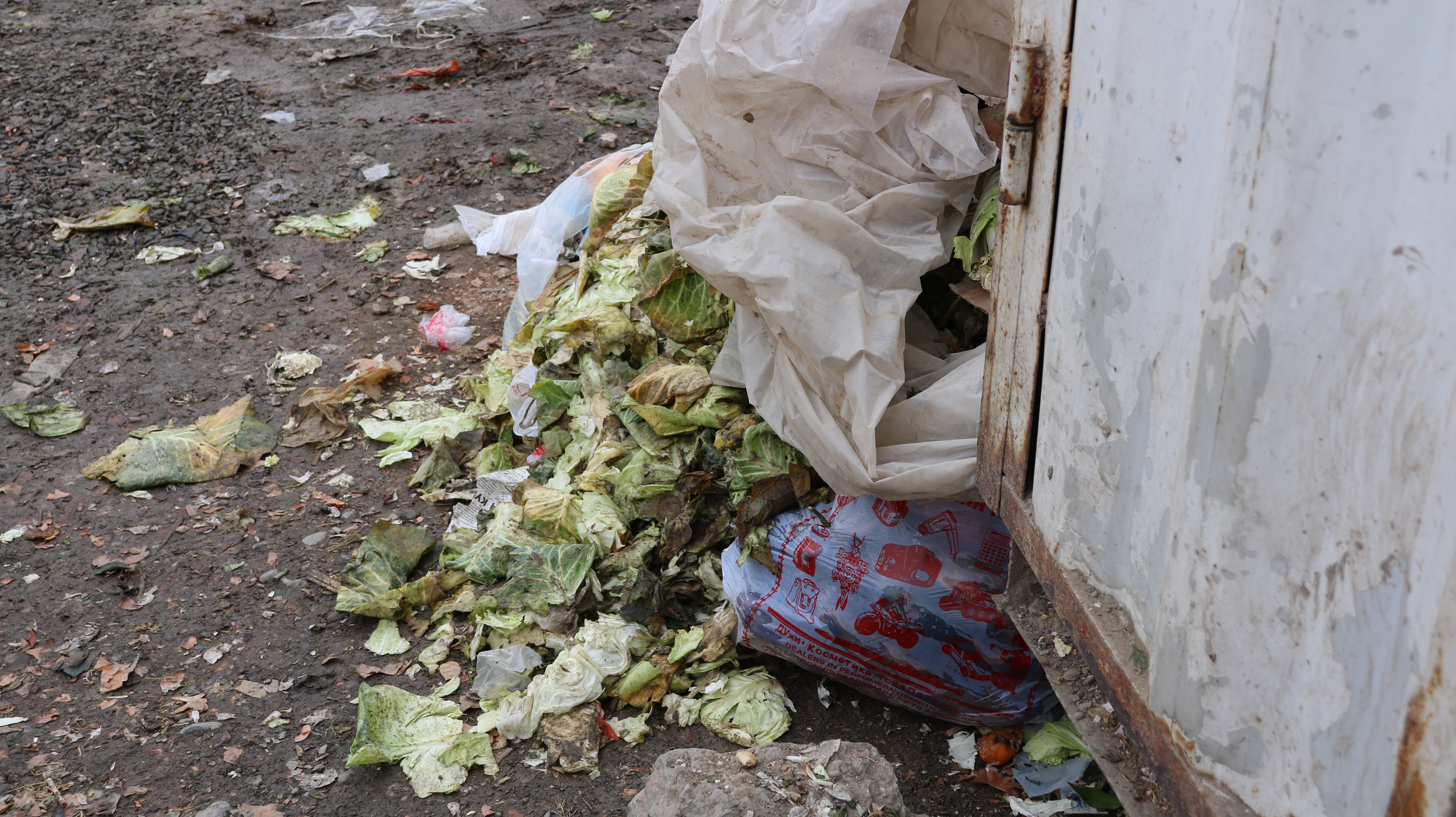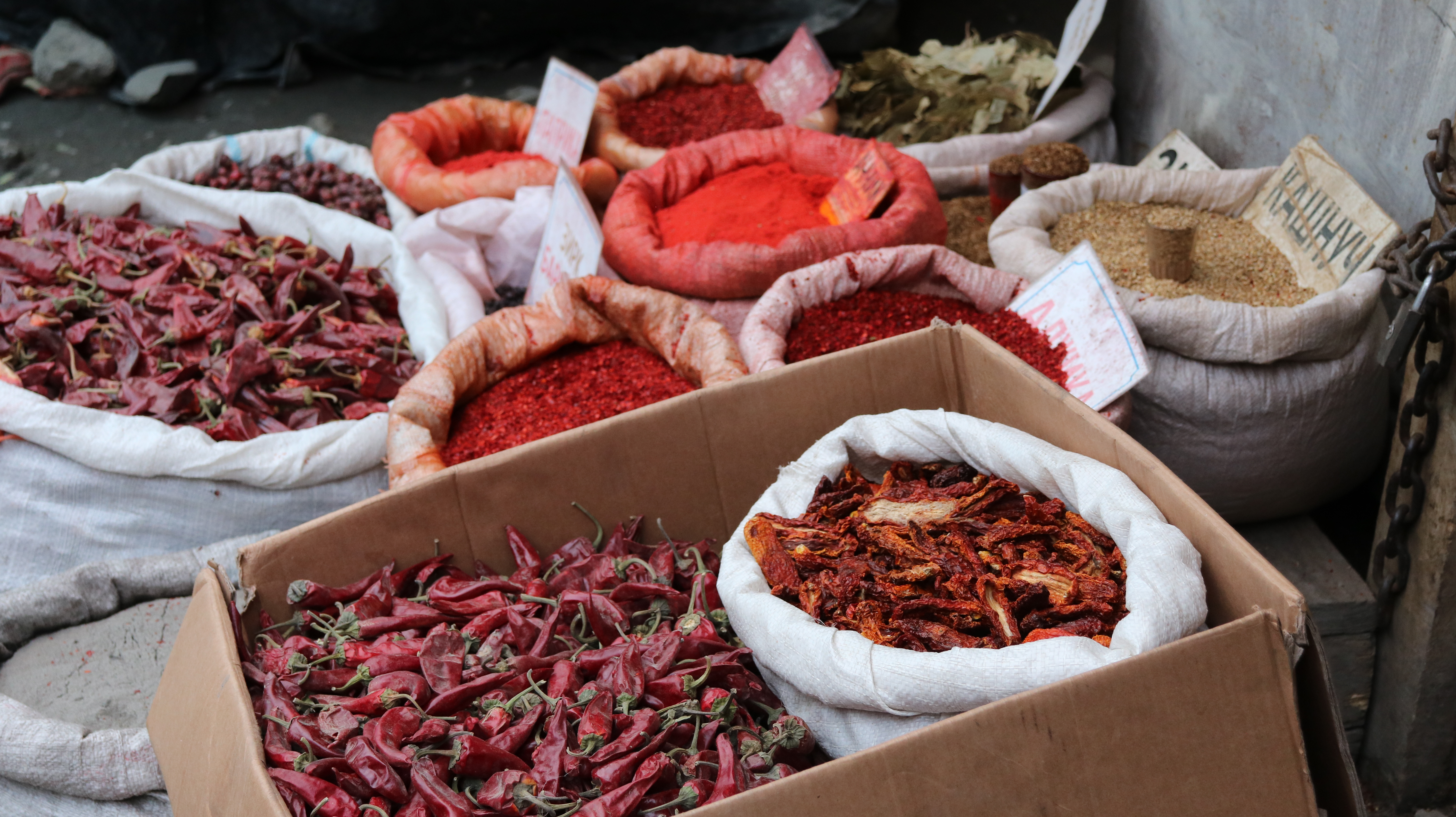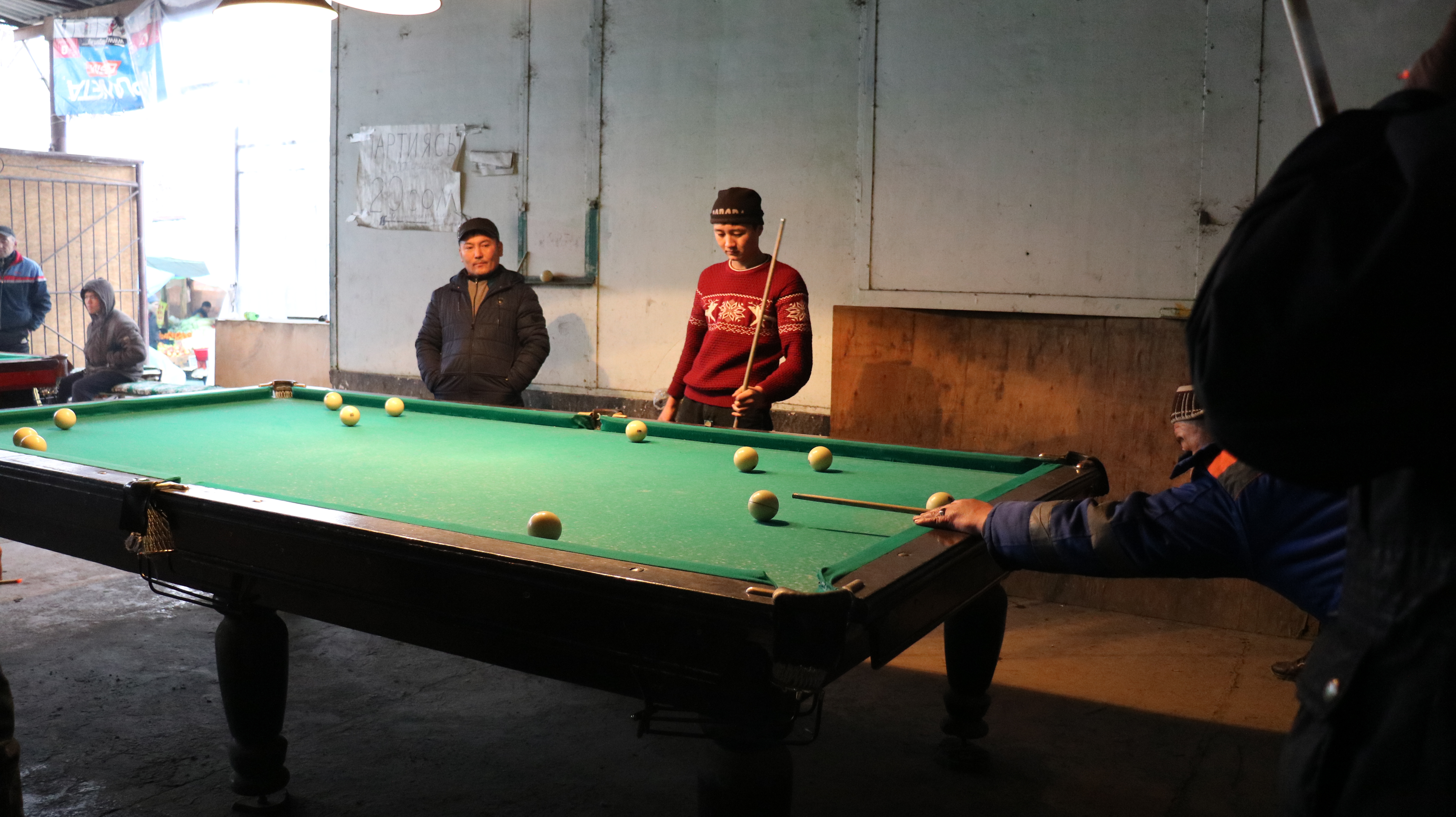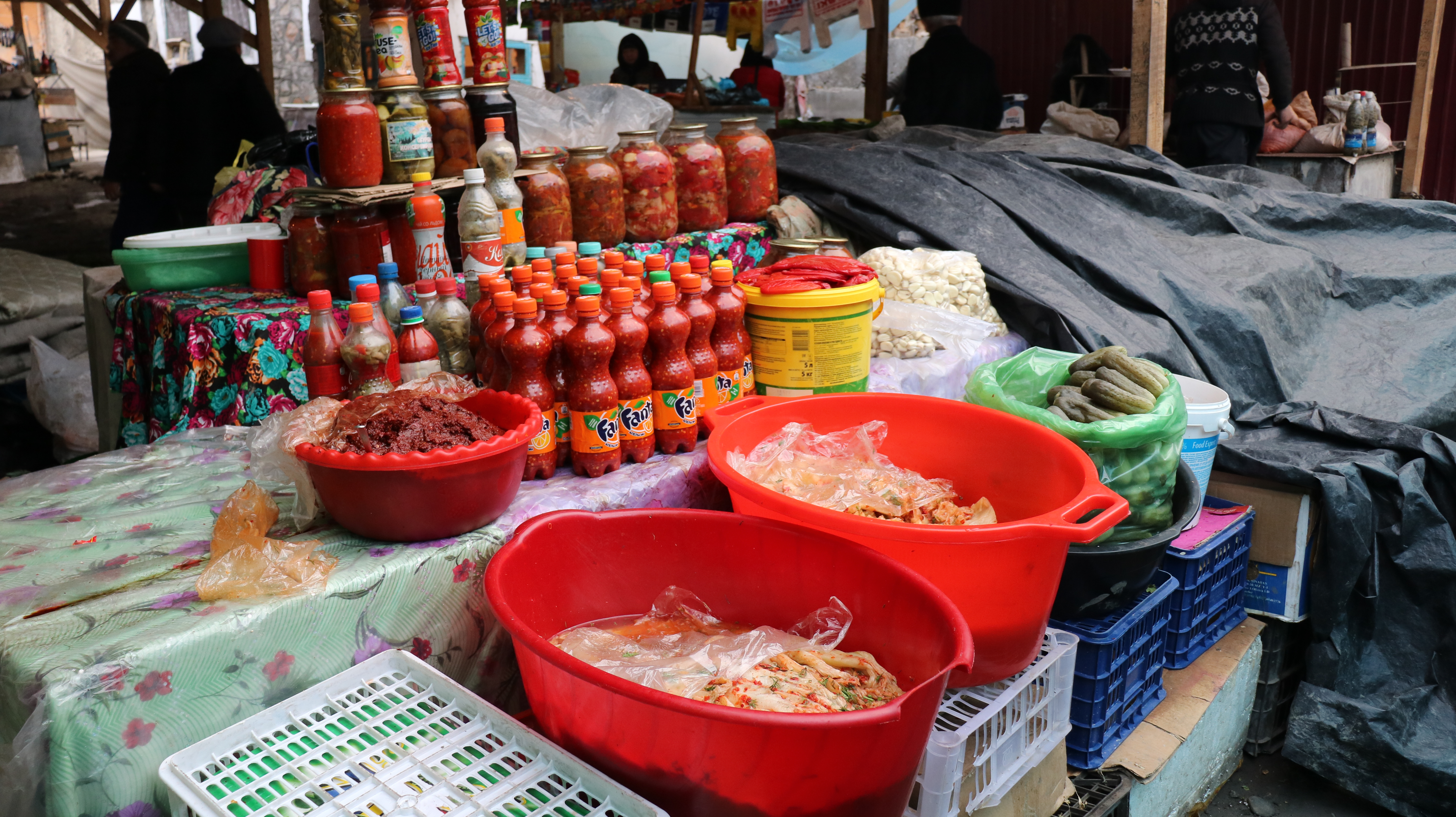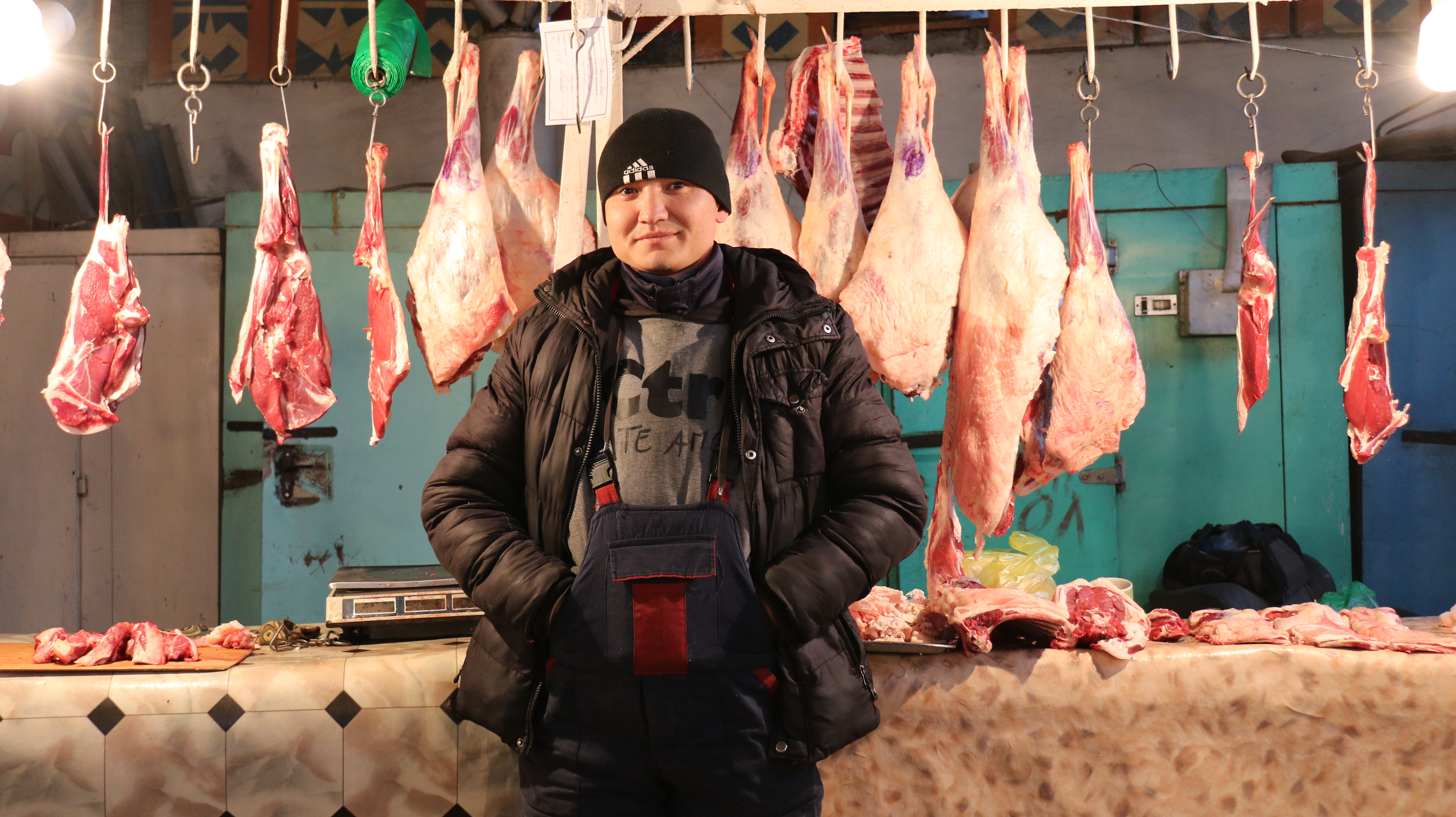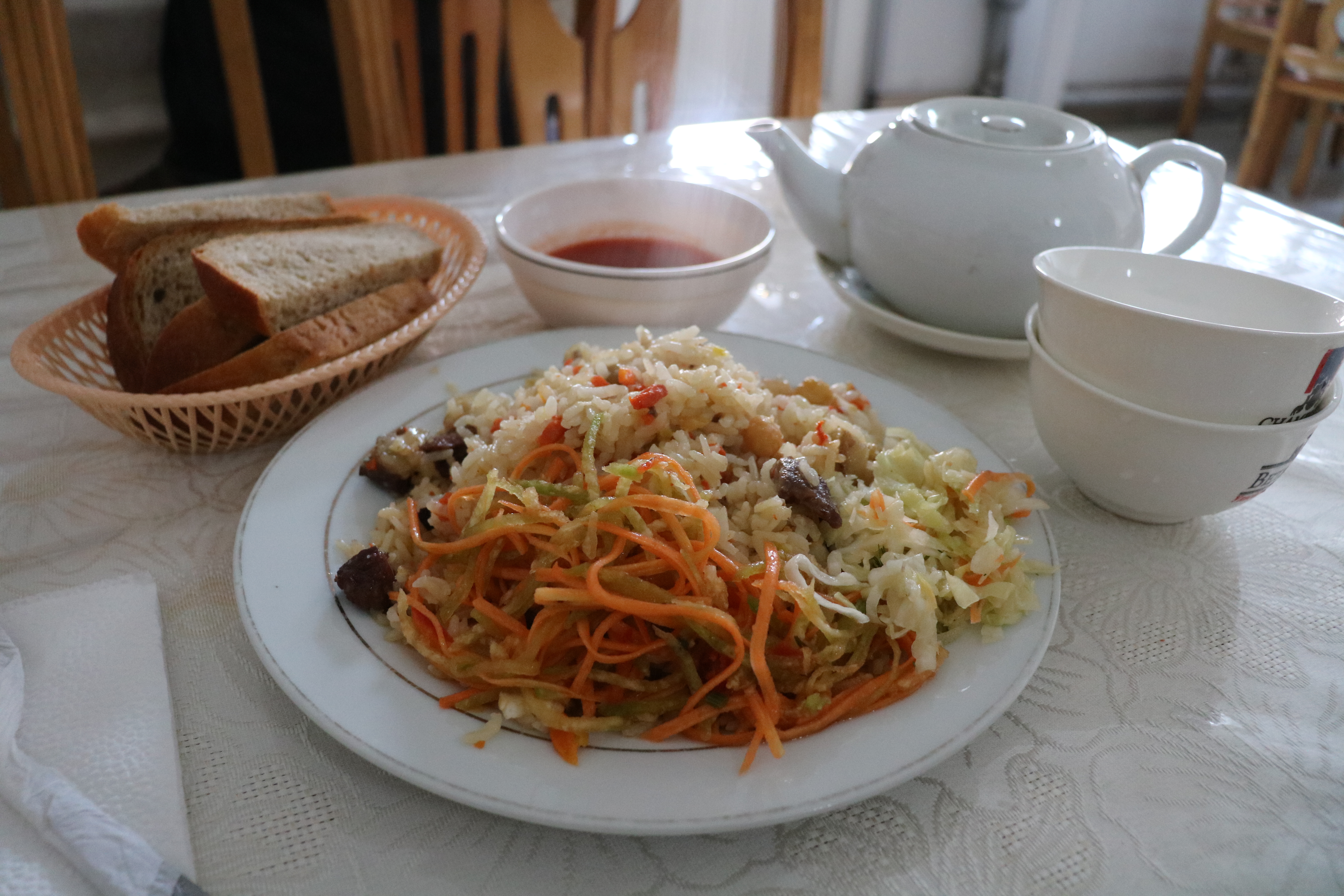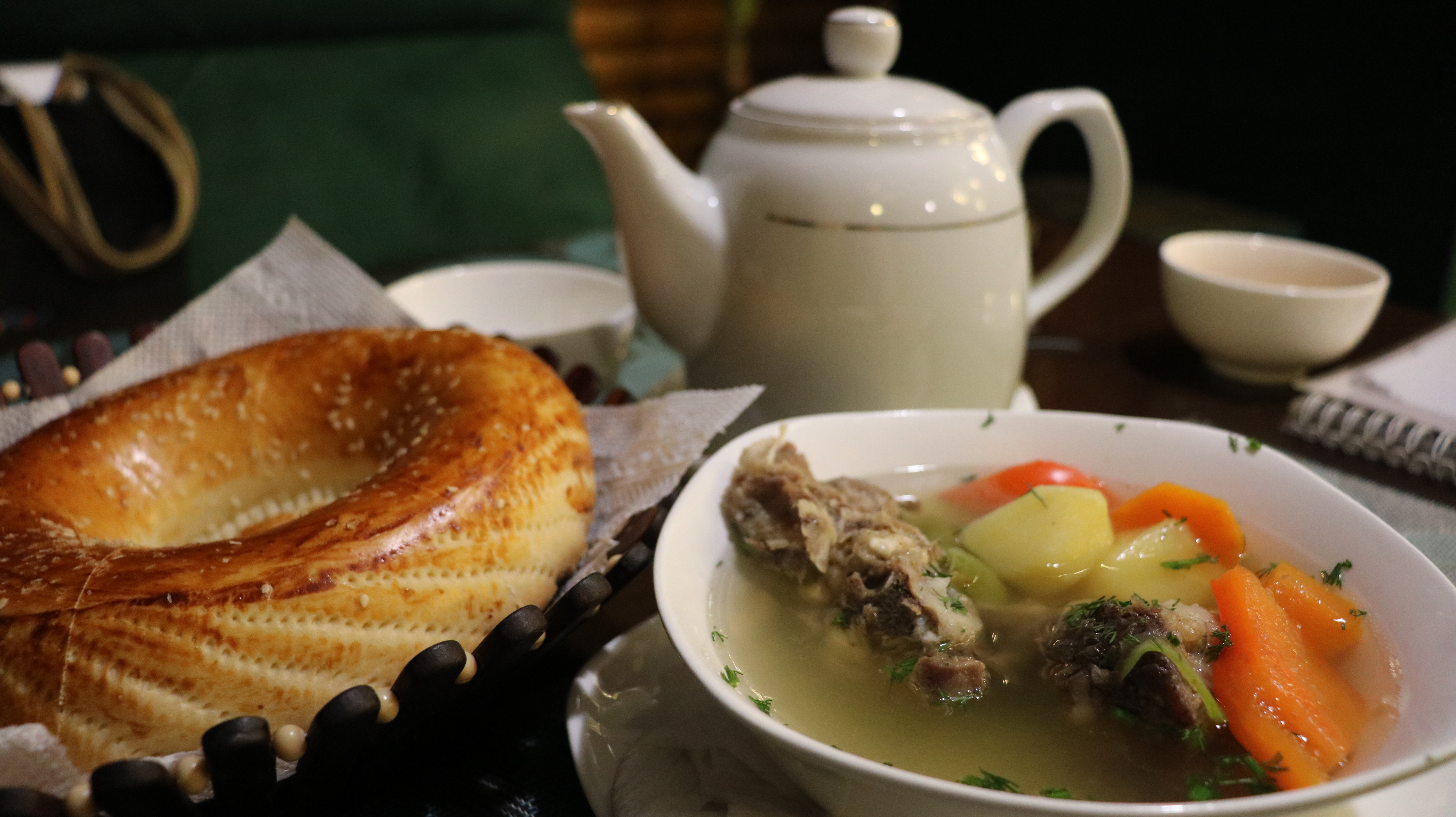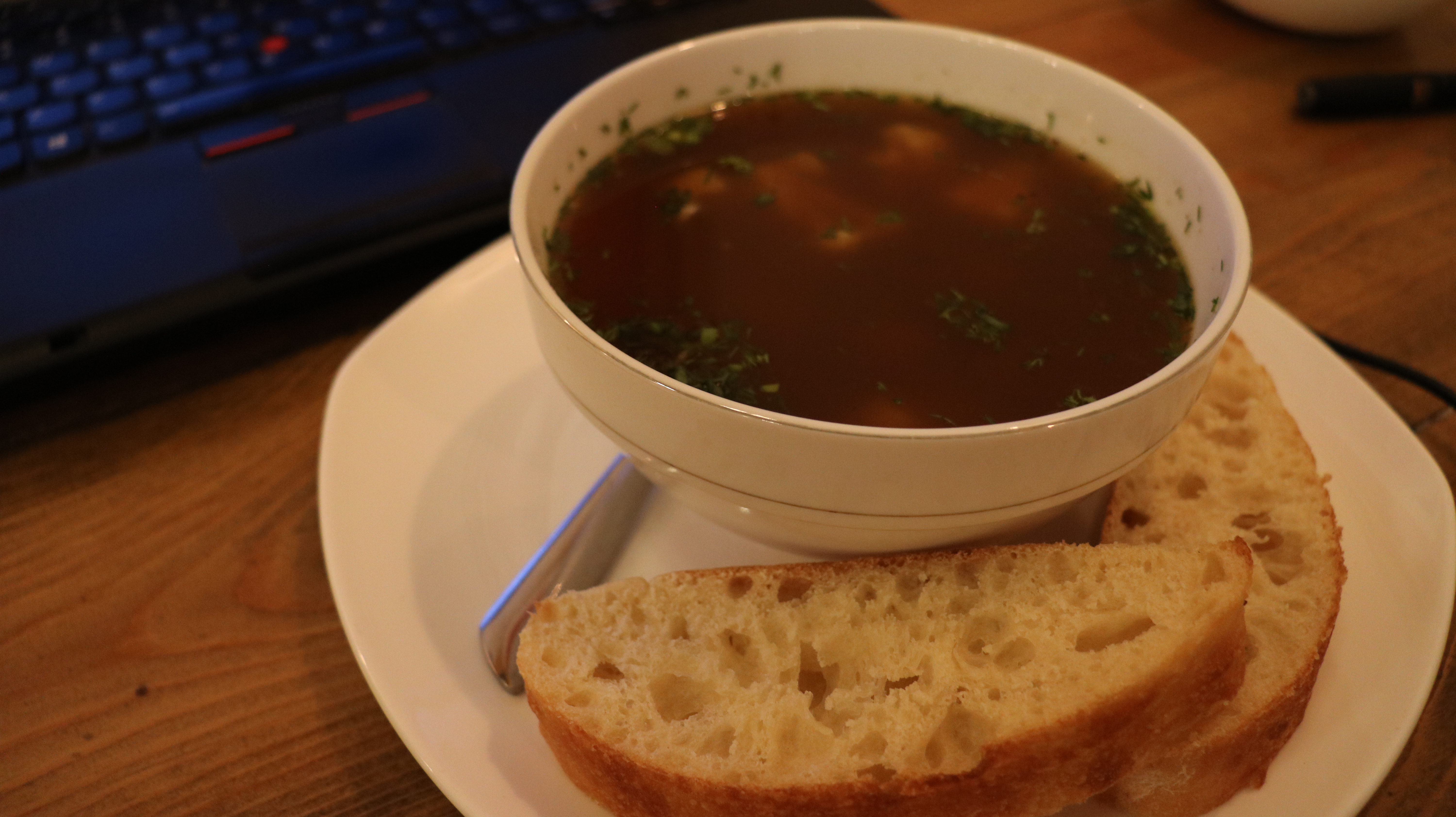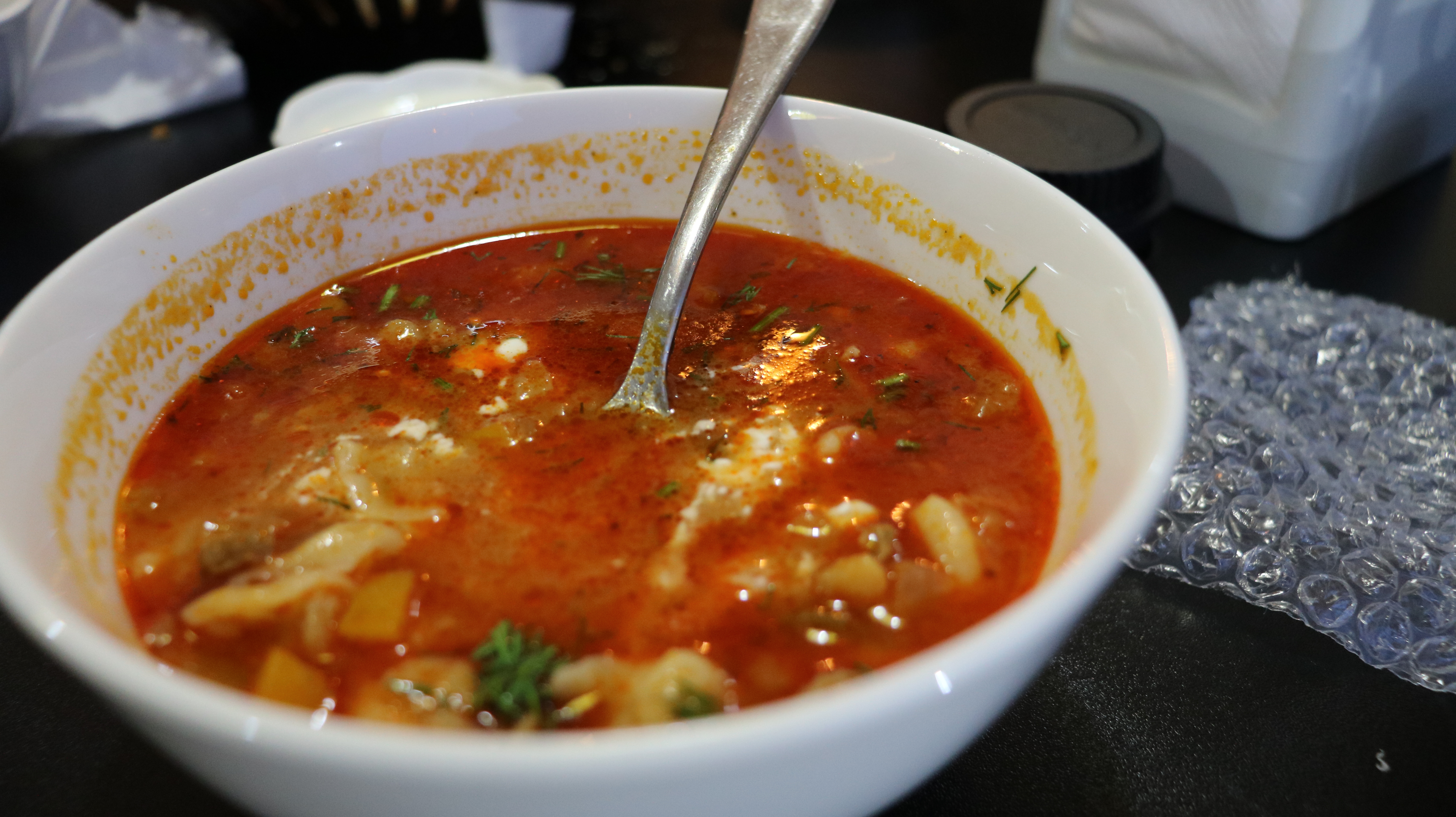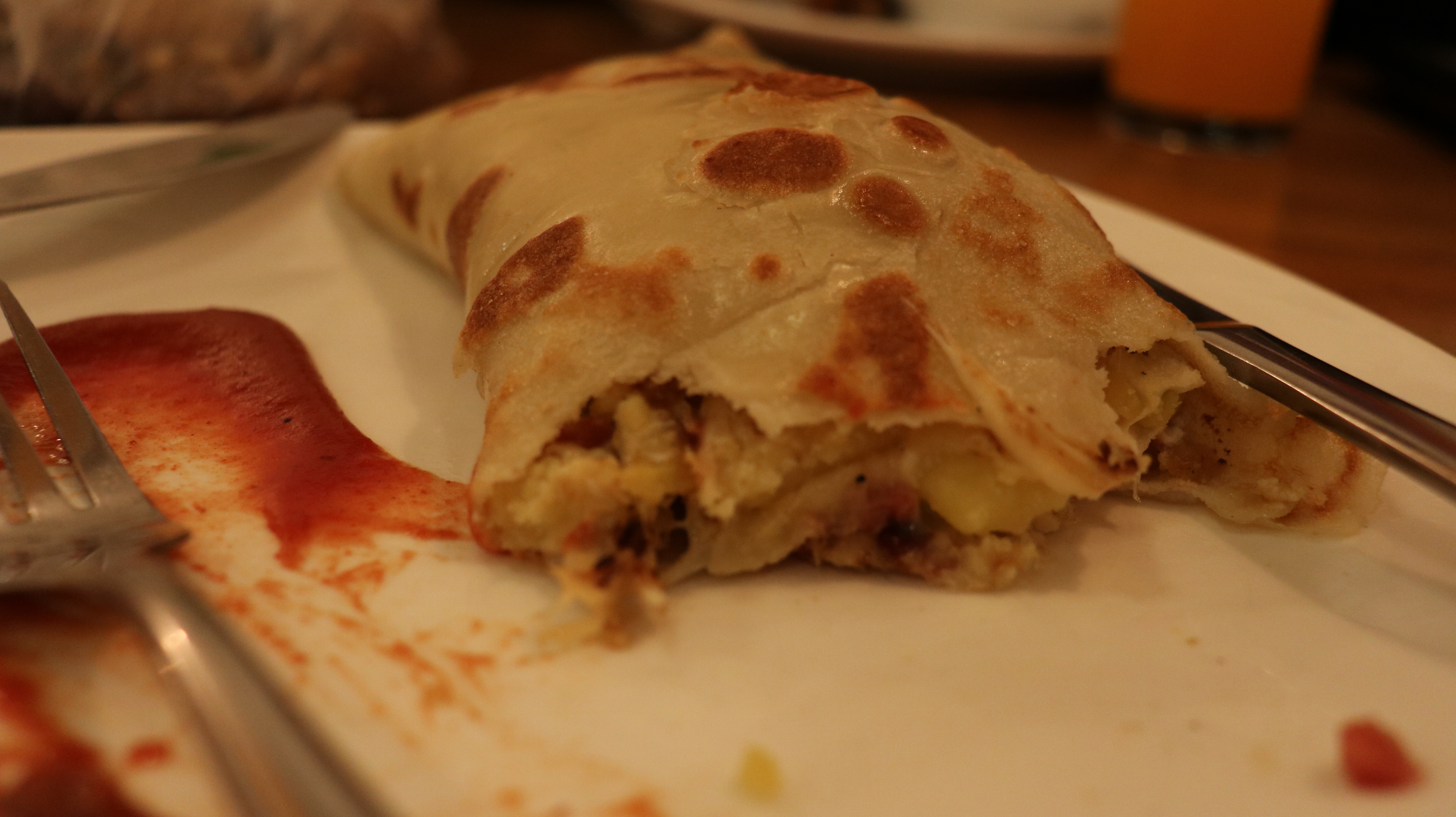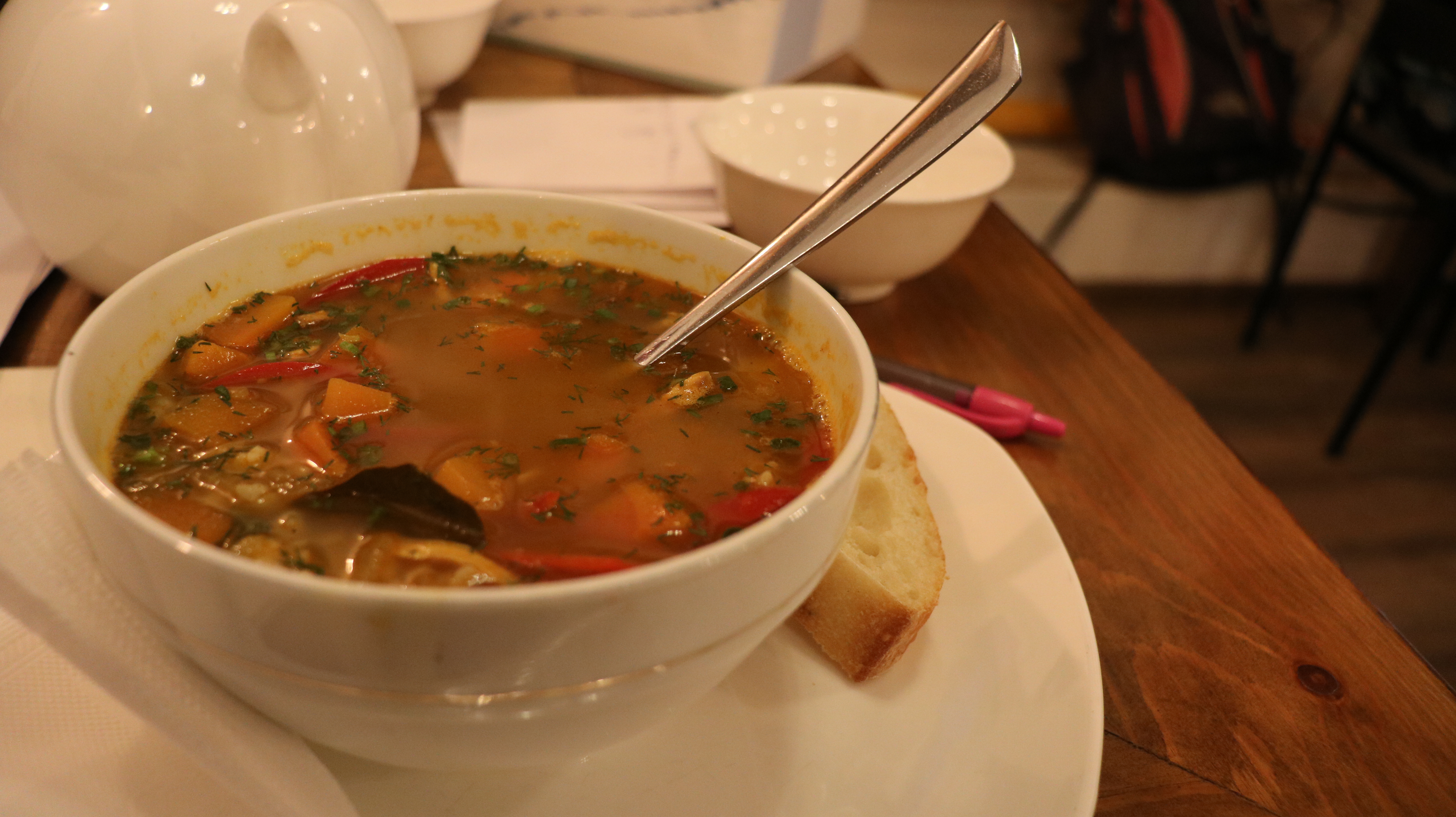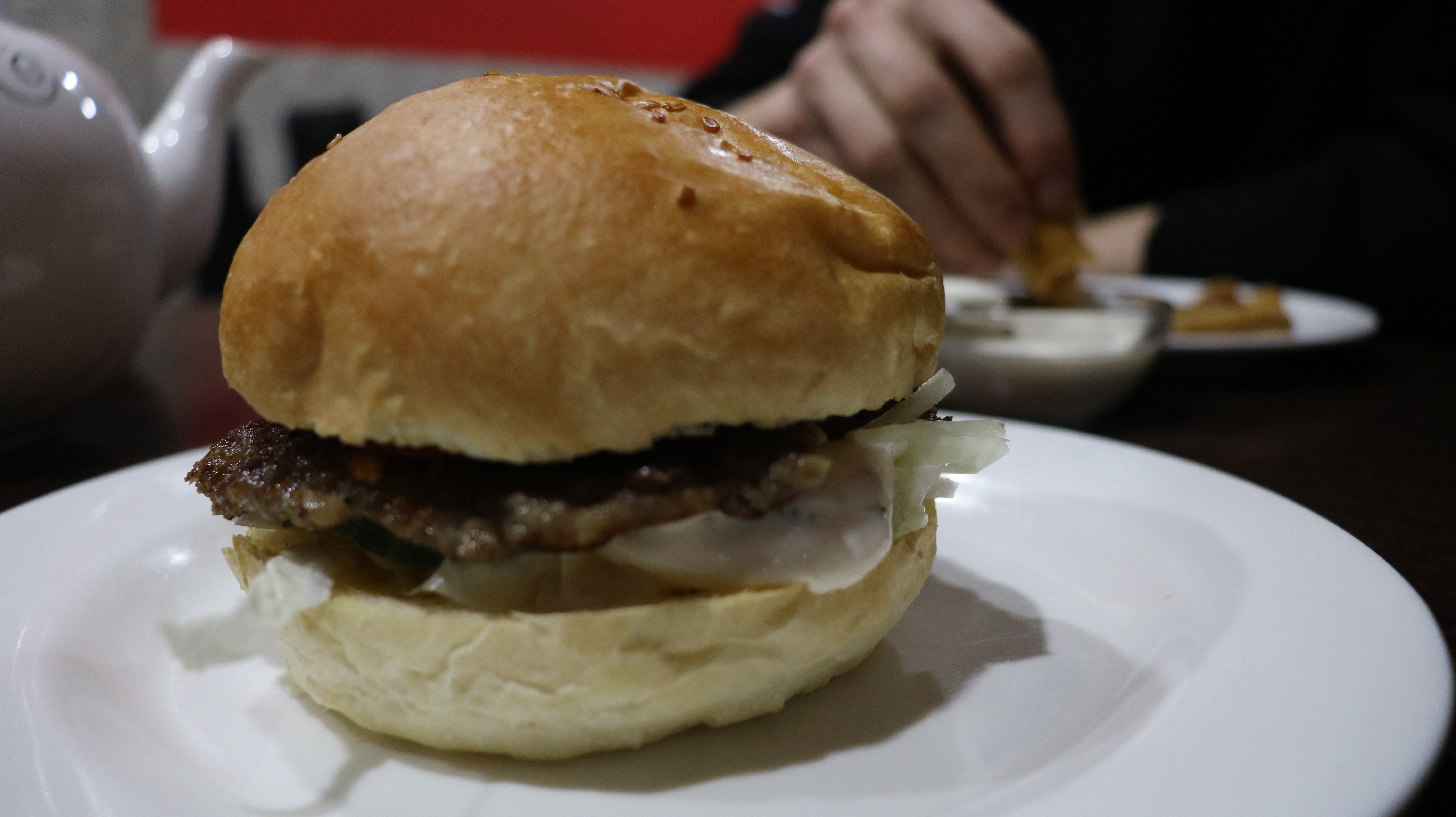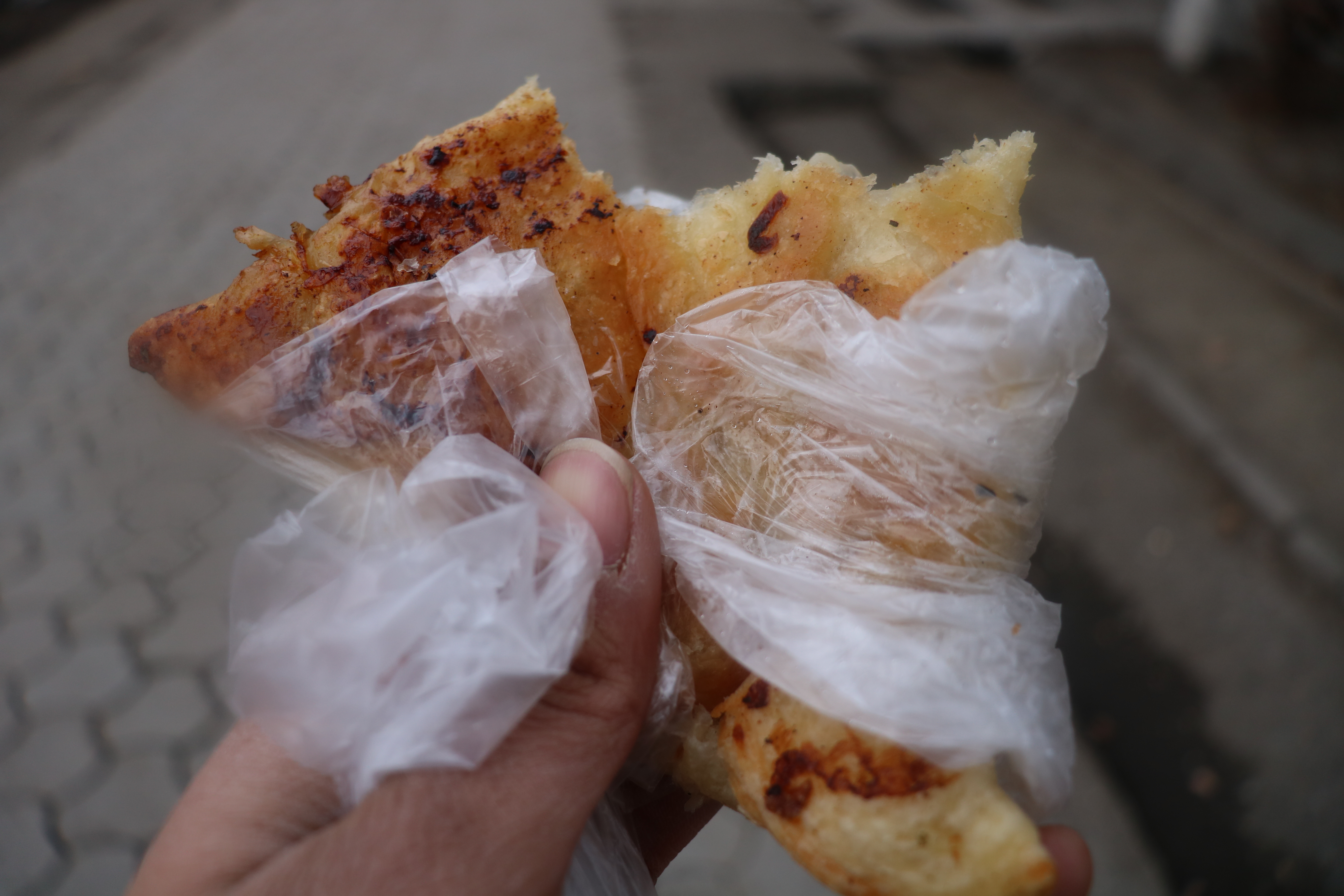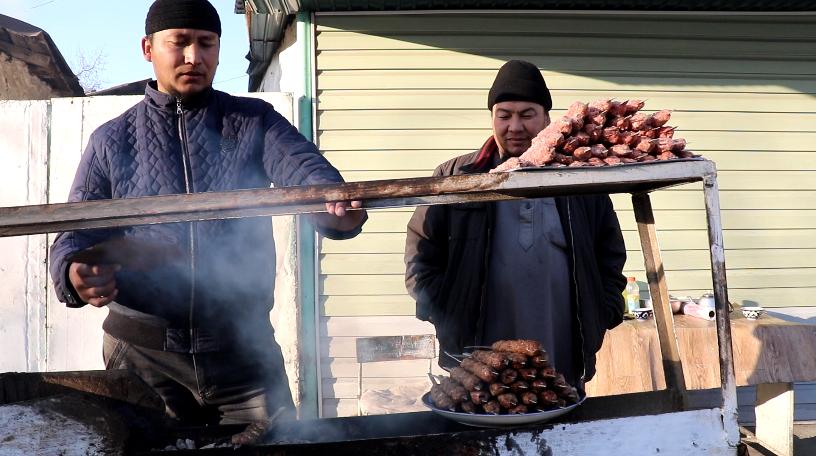From North to South
28 Jan 2018
Reading time ~20 minutes
The majority of people I’d talked to back in Bishkek about Islam in Kyrgyzstan mentioned at one point or another that things in the South were noticeably different than in the North regarding religion. I’d been curious all along whether the North-South divide in Kyrgyzstan was in fact as pronounced as people make it out to be. As I have only been Osh in Southern Kyrgyzstan for one week, I really can’t and shouldn’t attempt to make a conclusion on this front, and so I suspend judgement for now. Before diving to interviews from this week, here are some awesome sculptures and statues from around Osh.
And finally, some views around Jayma Bazar.
Interviews
Aliya Suranova: Journalist
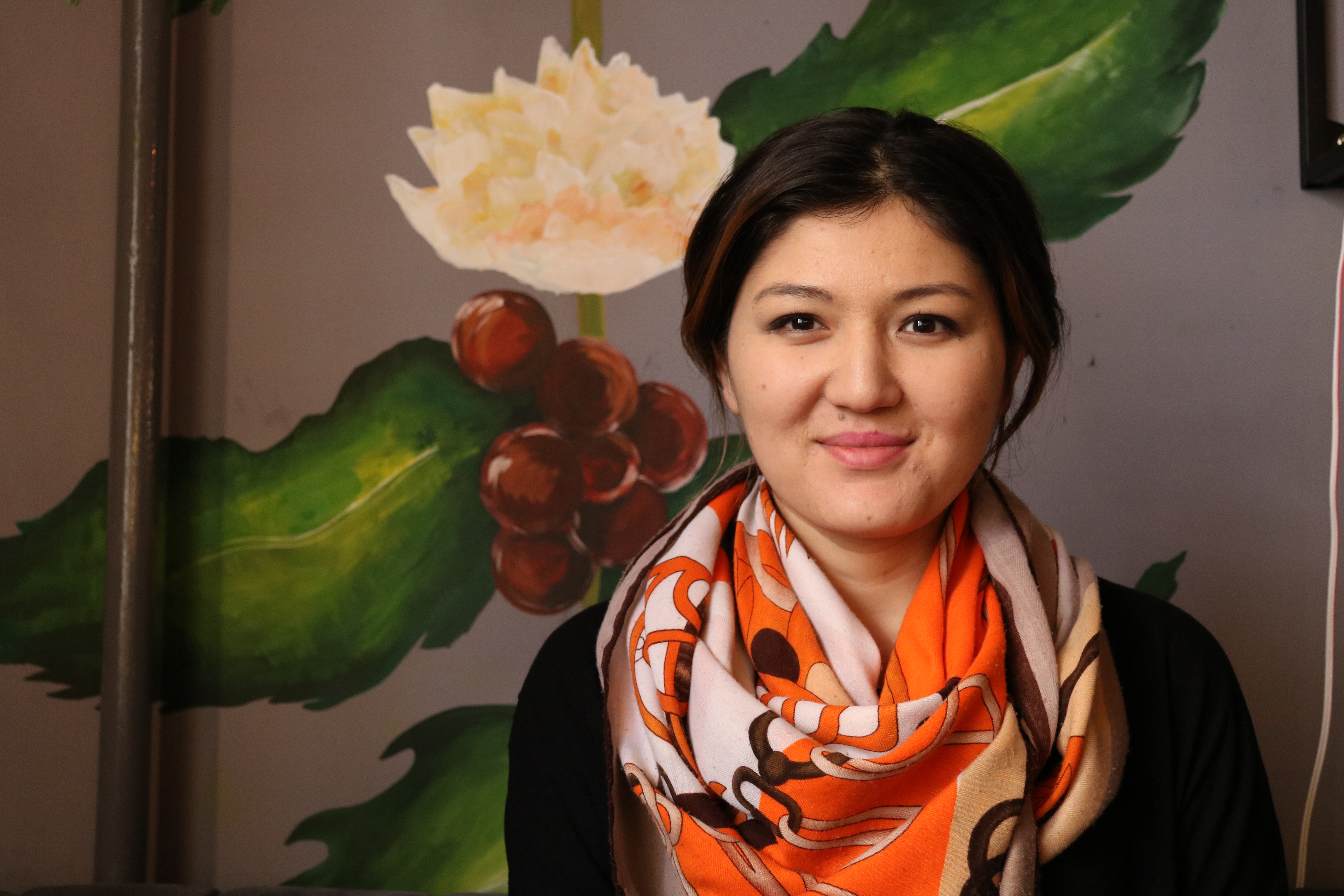
I first connected with Aliya Suranova back in Bishkek over coffee and general conversation about the new wave of Islam in Kyrgyzstan. About a week later, we found ourselves at another coffee shop in Osh discussing Islam in Kyrgyzstan yet again but this time on camera. Aliya is a freelance journalist for Radio Free Europe/Radio Liberty (RFE/RL) based in Bishkek. Religion factors into a decent amount of Aliya’s work in the form of blog posts, interviews, and meetings with experts, though she also reports on other issues and topics. At our interivew’s onset, Aliya remarked that although the new wave of Islam has been going strong for over 10 years in Kyrgyzstan, the media has only really begun to focus on it over the past 5-10 years. She shared with me several particularly poignant news stories, the first of which concerns arguably the most influential religious figure in Kyrgyzstan, Chubak Ajy, and his recommendation for Muslims to take up more than one wife. The second story, causing less of a media uproar, involved a group of mullahs (religious clerics) in a village in Kyrgyzstan who forcibly confiscated alcohol from local shops and poured their contents out into neighboring fields. Most relevant to the focus of my own research of the news stories Alia related to me was the reality that some districts in Kyrgyzstan have become so orthodox/conservative that many famous singers or pop stars no longer tour around those parts due to lack of lucrativeness and popular demand in those areas.
In addition to the various news stories regarding Islamization that have sprung up over the past 5-10 years, Aliya has noticed much more social media content dealing with Islam. In agreement with Saltanat’s words from last week, Aliya mentioned that the loudest noises on this front are contributed by puritanical Muslim types followed by trendy “reverts” to Islam most notably comprising celebrities in Kyrgyzstan’s various entertainment industries. The puritanical types, a definitive minority, apply the haram brand to most anything they can think of in the realm of culture including aspects of the performing arts and holiday celebrations. The use of hashtags and qualifers on social media posts such as inshallah (‘Allah willing’), mashallah (‘Allah has willed’), alhamdulillah (‘Praise be to Allah’), and subhanallah (glory to Allah) is becoming more and more commonplace. The number of celebrities and performing artists making Islamic noises on social media is certainly closer to a majority of people in show business as opposed to the percentage of Muslims in all who qualify as puritanicals. Aliya conceded that she can never be 100% sure of others’ motivations, but she suspects that such people may be less motivated by their own spiritual convictions than propagating a benevolent public image for themselves. Regardless of whether or not these celebrities actually care about Islam themselves, Aliya contends that their shows of religiosity on social media and on stage has had a palpable effect on their fans, thousands of Kyrgyzstani youth who are increasingly embracing Islam. Aliya characterized this phenomenon as a vicious cycle in which public figures capitalize on Islam to win the general public’s sympathies who in turn become actually more religious, increasing the demand for public figures to increasingly draw the Islam card. I asked Aliya if she thinks that it is in fact the case that public figures in Kyrgyzstan really gain a competitive advantage in their respective industries by putting up a show of piety in their public life. Aliya wasn’t so sure that celebrities somehow make more money or get more concert offers by showing paying lip service to Islam as much as she believes that celebrities gain a “safety pillow” or “safety net” by catering to religion which they can rely on when the going gets tough in show business. In other words, by peppering their public life with praise for Allah and the Prophet Muhammad, singers and other celebrities may feel more secure, comfortable, respected, or loved by their fans.
Toktobai Jumakulov: Sculptor
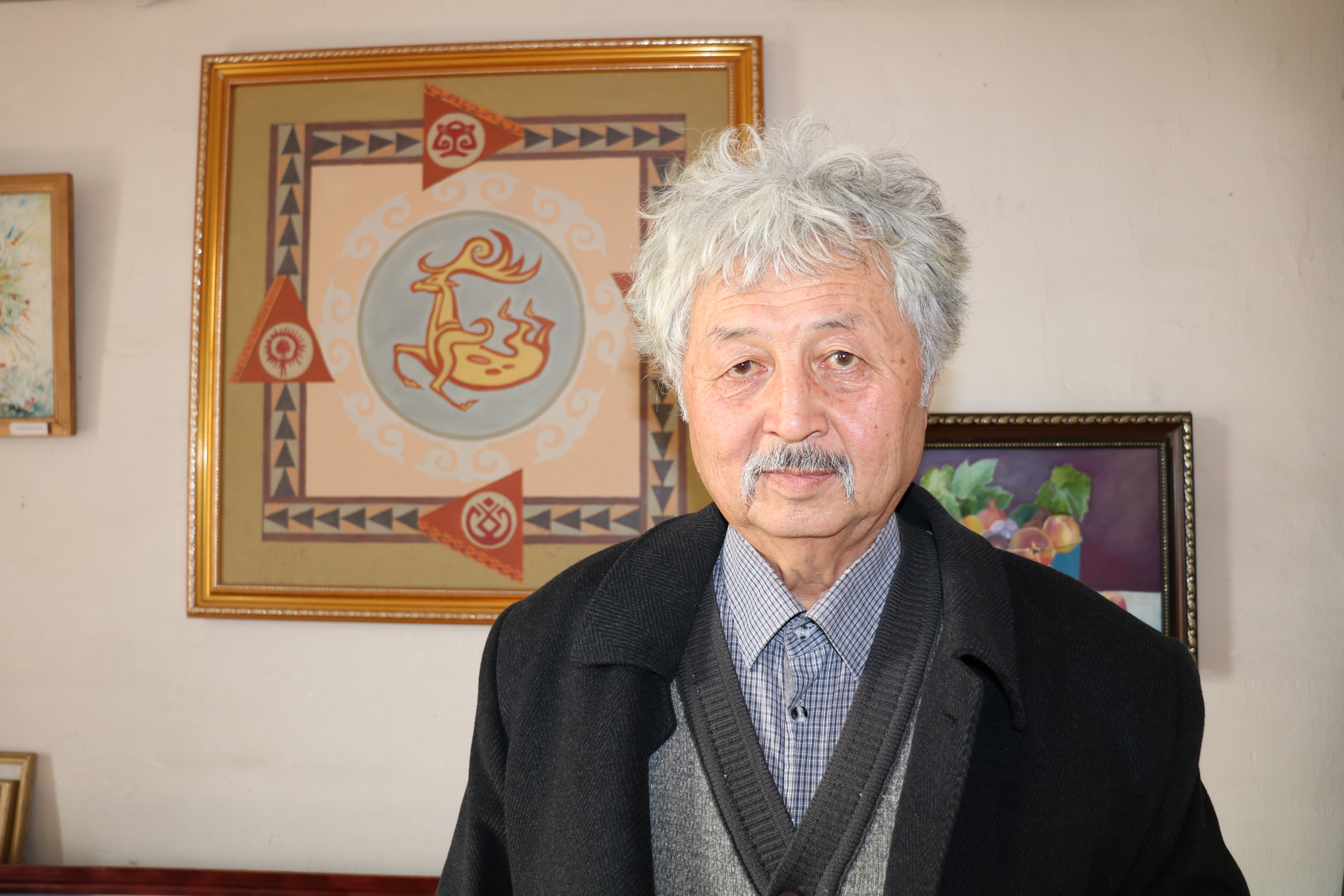
Toktobai Jumakulov is a well-known figure among visual artists in Osh. Many of his sculptures can be found sprinkled throughout the city’s streets and buliding facades. During his childhood, he was heavily inspired to pursue painting and sculpting by a local sculptor in his village (Bashbulak) who erected, among other works, statues or busts of Lenin. In due time, Mr. Jumakulov found a way out of his village and into the Moscow State Art Institute named after V. I. Surikova from 1986-1992. Since then he’s worked as a sculptor and lecturer at Osh State University’s Faculty of Arts where he is continually inspired by his students.
Though none of his immediate family members are particularly religious, Mr. Jumakulov recouted how his father would read the Quran on occasion during his childhood. Back then, there were much fewer mosques and educational institutes in existence for the acquisition of Islamic knowledge, so Mr. Jumakulov’s family had to settle for a rather basic understanding and minimal practice of Islam. He mentioned that during Soviet times that artists were barred from incorporating religious symbols or artforms into their works. Nowadays, Mr. Jumakulov is free to depict people in mosques or people at prayer in his paintings, which he considers to be a very good thing.
Mr. Jumakulov told me that he could not answer confidently on the topic of arts permissibility in Islam regarding the painting and sculpting of animate beings or faces of animate beings due to his lack of religious education. Even so, his thoughts and experiences on the matter, however limited, were quite revealing. I suppose for his lack of knowledge on and exposure to the issues at hand, Mr. Jumakulov takes for granted that painting faces and sculpting are haram simply because that may be what the majority of local religious figures in Osh contend in their religious sermons, private lessons, or casual conversations. There is no doubt that Mr. Jumakulov is an andherant of Islam - he told me that he only recently cut down on ritual prayer due to health issues, and he generally invokes Allah’s name before engaging in any creative activity. That being said, he made it fairly clear that religion should not box people in especially in the pursuit of artistic achievement. Mr. Jumakulov held that he’s met several pious Muslim visual artists who have no moral qualms about painting faces or sculpting all while obeying Allah’s fundamental commandments. Artists like Mr. Jumakulov are similar to artists like Omar Janyshev from a couple of weeks ago in the sense that they’re both open to the notion that what they do for a living may considered haram in Islam according to a number of official sources. Nevertheless, such artists are willing to take the risk of making, teaching, and selling their craft in light of the fact that they believe they are otherwise rightly guided by the path of Islam. To be clear, such artists do not unapologetically claim and attempt to justify that what they do is perfectly permissible in Islam. Rather, they realize that human beings are naturally predisposed to music, dance, drawing, sculpting, etc., so what matters most for someone who is especially talented in any of these regards is to properly vet the creative projects that they may engage in to ensure compatibility with the fundaments of shariah. Do to a lack of consensus on the matter at hand among representatives of official or canonical Islam, they rely on a synthesis of their knowledge, experiences, and intuitions to determine what they should or should not represent in their art. In other words, I am fairly certain that Mr. Jumakulov would not sculpt a nude human figure for public display in the streets of Osh just as much as I am sure that Omar Janyshev would not compliment a woman’s nude body in one of his songs. At the end of the day, artists like Mr. Jumakulov and Omar Janyshev recognize that, in addition to their commitments to Allah, they have an obligation serve the general public what they may appreciate and are ready for.
Asan Kybanychbek: Dancer, Visual Artist, and Potential Singer

My interview with Asan Kybanychbek (instagram: @asan_7pro) felt remarkably similar to my meeting with Jyrgalbek from a couple of weeks ago. Both Asan and Jyrgalbek grew up under the influence of rather puritanical Muslim relatives and both have more or less turned away from actively practicing Islam in favor of rigorously pursuing the arts while being rather conscious and convinced of the notion that their arts engagements are antithetical to the religious sensibilities of a significant portion of Muslim officials and laypeople today. Both Asan and Jyrgalbek rather explicitly mentioned their “choosing” music, painting, or dance over Islam at some point in their lives. The influence of his religious mother and very religious relatives, Asan was made aware of controversies surrounding the arts in Islam from a very young age. His relatives in particular would tell him on occasion that drawing faces was haram, which led him to opt for only drawing natural scenes and inanimate objects and structures such as skyscrapers. During his middle schooling days, Asan stopped drawing entirely and began to more actively practice Islam by learning to read in Arabic, recite the Quran, and regularly observe ritual prayer. Around the time he hit high school though, he no longer felt attracted to Islam, feeling, as others I’ve intervied feel, that it demands of its adherants too many restrictions particularly in the realm of arts consumption and production. In Asan’s experience, individuals with puritanical Islamic sentiments have not only decried his visual arts engagements but also his activities as a dancer. Back in his hometown of Jalal Abad, Kyrgyzstan, several of his general education school teachers would remind him that dancing was haram as they believed it to be personally coordinated by Satan himself just like flute playing and other engagements with the arts. As a fairly prominent figure back in Jalal Abad due to his activties related to organizing and participatng in dance battles, Asan was occasionally approached by people outside of his extended family including school teachers and religious people regarding the sins of dance. Since moving to Osh, he reported that he’s had no encounters with artsphobic Muslims mostly due to the facts that he’s now separated from his extended family and that Osh’s cultural scene is simply more developed and normative Jalal Abad’s scene. This point brings me back to an observation a friend made back in Malaysia regarding the culture of televised nasyeed singing competitions in that country ( check out this post of mine for more details). At that time, I was rather surprised that two female singers (one playing the guitar) performed as a duo as part of a nasyeed singing competition and one of the female singers began beat boxing in the middle of their set. When I prompted my friends who witnessed the event along with me to share their thoughts on the matter, one remarked that people nowadays are exposed to much, much more striking things in popular culture particularly by means of the internet. Such an act on an Islamic television channel was actually not a big deal at all, though it would have be unthinkable only 10 years ago. All of this is to say that even the most pious of Muslims in cities where arts and culture are simply more prominent and well-respected are generally more receptive to a variety of arts engagements simply due to such expressions being mainstream in society as opposed to isolated expressions of culture or sub-culture(s).
Mukhtar Ismailov: Painter and Arts Professor

Mukhtar Ismailov is jokingly referred to as an imam by his colleagues at the Faculty of Arts at Osh State University for being one of the more observant Muslim among the bunch. Unfortunately, when I first met Mr. Ismailov, I wasn’t quite in on this joke just yet. Halfway into asking Mr. Ismailov questions pertaining to being an imam during our interview, it surfaced that he was actually not an imam at all. After awkwardly laughing the misunderstanding off, I proceeded to ask him questions about the dynamics of being a visual artist, professor of art, and devout Muslim. Mr. Ismailov’s story is remarkably similar to that of Mr. Jumakulov’s in the sense that both members of Osh State University’s Faculty of Arts were heavily inspired by the artistic engagements and achievements of a local visual artist in their respective villages throughout their childhoods. In Mr. Ismailov’s case, it was a local painter whose murals could be found scattered about various walls in his village. For the most part, Mr. Ismailov’s parents allowed him the freedom to engage with both arts and religion in whatever capacity wished as a youth. They neither encouraged nor forced him to take up painting or praying. Nevertheless, among all of his siblings, he ended up both the most religious and most artistic.
As he dove deeper into both Islam and visual arts, Mr. Ismailov confronted the typical controversies surrounding painting and sculpting in Islamic law. After learning about the particularly problematic subject of figurative depictions in Islam, he put a fairly hard stop to doing portraits of people. I suppose this wasn’t the most timely meaneuver, as he had just completed his graduate thesis in pedagogical sciences for portrait painting. Nonetheless, Mr. Ismailov admitted to still dealing with portrait painting on occasion especially for pedagogical purposes and special occasions. He made this concession rather unaplogetically, more or less convinced of the view that drawing animate beings must not be a very remarkable sin if at all one at that in the grand scheme of things. Mr. Ismailov contended that imams in Kyrgyzstan and abroad have bigger problems to deal with concerning the umma (the worldwide community of Muslims) than matters of arts permissibility in Islam. Besides, Mr. Ismailov is of the opinion that the average imam or mullah in Kyrgyzstan has a long way to go before they are qualified to provide nuanced and well-informed opinions on the issues at hand. I suppose Mr. Ismailov was getting at the fact that religious figures should probably get their acts together with regards to more salient issues that concern Muslims today before investing time and energy towards solving the haram/halal debates on music making/listening, dancing, painting/sculpting animate beings, etc. Mr. Ismailov’s words bring us to a very important point which is that Muslim artists are often aware of the potential danger they subject themselves to in the divine economy of risks and rewards by engaging in their artistic pursuit(s) of choice. Yet such artists choose to embrace this potential danger for any combination of the following reasons (not a complete list):
- The potential danger is negligibly harmful when compared to the potential danger associated with engaging in more serious manifestations of sin, which most people engage in anyway, e.g. lustfully eyeing a good looking passerby, using of foul language, or even just thinking about sin.
- One’s livelihood depends on one engaging in the artistic pursuit(s) of one’s choice.
- One simply cannot know for sure whether one is truly sinning or not when engaging in one’s artistic pursuit of choice. In this case, one simply chooses to be edgy and take the risk rather than playing it safe.
By the end of our interview, I have to say that I felt a bit silly about having drilled Mr. Ismailov for roughly an hour on the permissibility of figurative depictions in Islam and his engagements with figurative depictions all while being completely surrounded by figurative depictions in the form of portaits and human sculptures in the room we conducted our interview in. This fact exemplifies just how much of a fringe issue arts permissibility is in shariah, as I could not possibly imagine conducting an interview with someone regarding the Islamic view on sexual promiscuity or substance abuse in a strip club or marijuana dispensary.
Ferhat Gökçe: Associate Professor of Theology

Ferhat Gökçe is an associate professor at Osh State University’s Faculty of Theology. As part of his master’s degree and PhD studies at the University of Anakara, he specialized in the hadith literature and Sufism. Mr. Gökçe dedicated the majority of our interview time to arguing a rather central motion in the debate on permissibilities of arts production and consumption in Islam, which is that perceived opposition to arts production and consumption in the source texts of Islam, namely the Quran and Hadith, formulated into Islamic law by scholars throughout Islamic history ought to be placed and evaluated in the context of pre-Islamic societies, particularly that of the Arabian peninsula. By meticulously contextualizing such controversial passages, one can get at the underlying reasons as to why their subject matters arose such controversy in the first place. Having unearthed or surmised the reason(s) for a given perceived prosciption in the Islamic source texts, one is then properly equipped to gauge the relevance or necessity of such a proscription in contemporary Muslim society. In contemporary Islamic discourse of various Muslim majority regions in the world, this line of reasoning I’ve just delineated resonates most with the strain of Muslims who either call themselves or are branded by others “liberal Muslims” or proponents of “liberal Islam”. Such Muslim thinkers and activists, champions of modernity, are often more approving than not of most artistic expressions one could possibly engage in today given a few baseline shariah-compliant determinants. Though Mr. Gökçe did not literally refer to himself as a “liberal Muslim”, his views on the topic seemed to me to be pretty fair giveaways.
Mr. Gökçe’s streak of contextualiation began with an apology for figurative depictions in contemporary Islamic society in light of the conviction that figurative depictions were disapproved of by early Muslim figures due to the prevalence of idolatry in 7th century Arabian society, a viewpoint I’ve encountered time and again on my travels. In other words, less paintings and sculptures of people and animals meant less possibility for people to engage in shirk (idolatry). Mr. Gökçe proceeded to provide numerous examples of how visual art of various shapes and sizes including figurative depictions has thrived throughout Islamic history in spite of the perceived oppositions to figurative depictions in Islamic source texts. Before considering such artworks and visual arts cultures on a case by case basis, however, Mr. Gökçe made it clear that Islam unequivocally promotes beauty, a rather uncontroversial statement among Islamic actors of most all persuasions. If Islam weren’t about beauty and beautiful things, one wonders why Muslims recite the Quran so resplendently as opposed to merely “speaking” it, why the Quran is in such alluring verse form as opposed to prose, and why Muslims throughout Islamic history have so masterfully engaged with calligraphy and geometric art and architecture. Such dispositoins to beautify language and things have precedent in the example of the Prophet Muhammad and the sahaba (the Prophet’s companions). Mr. Gökçe mentioned how it is reported in a hadith passage that calligraphy could be found on the Prophet Muhammad’s pillow case. He also pointed to the fact that mosque minbars (raised structures for imam’s to give religious lectures on) even during the Prophet’s time were intricately ornamented with calligraphy and designs as they are today. In the realm of sound art, though there is no mention of the Prophet consistently listening to music or not, it is reported in various hadith that the Prophet and sahaba would listen to metered poetry recitation. Mr. Gökçe further mentioned that during caravan journeys, pacekeepers were charged with supplying music to have an invigorating effect on transport camels among other purposes. A native of Turkey, Mr. Gökçe concluded his verbal Islamic arts showcase with an array of miniature paintings from the Ottoman empire replete with detailed paintings of human faces. I felt that such variegated examples of arts consumption and production that Mr. Gökçe brought up during the course of our interview allow one to appreciate the sheer amount of thought and work that has already been thought, debated, and/or carried out by so many well-informed and well-meaning Muslims in positions of authority throughout the history of Islamic civilizations pertaining to the arts and arts permissibility in Islam. I suppose not enough arts-phobic Muslims are aware of the fact that such a diverse lot of music making, visual arts, and other realms of arts were normative forces in a slew of Muslim majority socities, not to mention approved of by the very highest of scholars of the religious sciences in these societies. In other words, the fact that Ottoman courts featured impressive forms of music and dance says something about the pro-arts views of the variety of stakeholders and influencers in such courts, be it religious, economic, or political actors. It goes without saying that Ottomon political and religious elites did not friviously choose to include music and dance into the ritual activities of the court and that the wider religious community and general public must have had something to say on this matter. Whatever the extent and nature of negotiations that had to have taken place for such engagements with the arts to have been an approved reality in the Ottoman empire and other notable Islamic civilizations, the bottom line is that arts production and consumption were mainstream phenomena. Of course, Islamic history also features political regimes such as the infamous case of Afghanistan under the Taliban under which arts engagements which may have been normative in the case of Ottoman Turkey were nearly nowhere to be found. All of this is to reiterate the crucial idea that though Islam as divinely ordered may be a singular, unequivocal path, Islam as it manifests on the ground in the lives of Muslims simply depends on the convictions and interpretations of the sum-total of Muslims who have a say in the crucial debates at hand at any given time and place. In some times and some places, that means no music and in other times and other places, that means lots of it.
Tasty Treats in Osh
My time in Central Asia started out in the Kyrgyz-heavy city of Bishkek. In contrast, Osh features nearly equal presences of Kyrgyz and Uzbeks. This demograhic difference has surely reflected in the foods that I’ve been exposed to and consumed out here.
